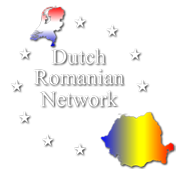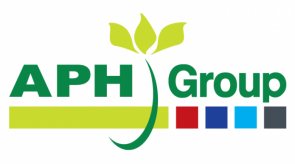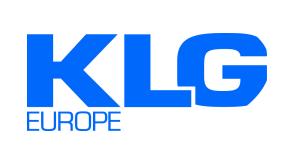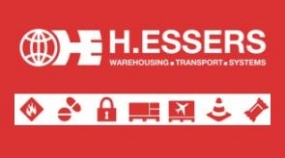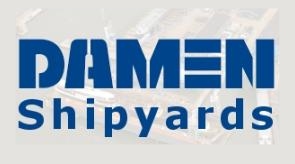Newsletter July 2024

Stop defending your prices and start communicating your value
In other words, the added value you and we provide is the focus, not the price. Because there is always someone who can do it cheaper.
Even though Romania was still a “white spot” to many around 2000, a number of pioneers at the turn of the century saw the opportunities the country offered. 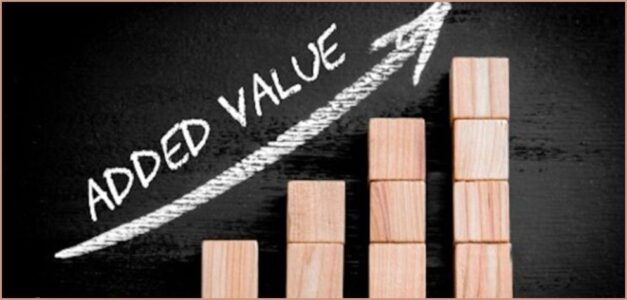 These pioneers decided to share their experiences and guard each other from the pitfalls of entering a new emerging market, and when Romania joined the European market in 2007, they decided to establish the Dutch Romanian Network because the increase in interest was also growing rapidly.
These pioneers decided to share their experiences and guard each other from the pitfalls of entering a new emerging market, and when Romania joined the European market in 2007, they decided to establish the Dutch Romanian Network because the increase in interest was also growing rapidly.
Entrepreneurs discovered that the law of the inhibiting lead states that in many cases, a disadvantage is actually an opportunity.
And this has been demonstrably proven in today’s Romania!
And our country has become the largest investor in Romania!
The pioneers of the time were of the opinion that the (DRN) platform should have a nonprofit character so should not be an end in itself.
However, in order to adequately answer the demand of entrepreneurs, a professional organization had to be set up so that there is an added value for the members and it has to be kept up to date.
So the growth model should be pursued because this is precisely what strengthens the influence of the individual member.
So new members are very welcome and as we indicated it is not about the (small) price of membership but about the added value it creates for you as an entrepreneur.  Please note the date of the annual Romanian Business Day on Thursday, November 21, when we hope to welcome you as a member!
Please note the date of the annual Romanian Business Day on Thursday, November 21, when we hope to welcome you as a member!
Just send us a message via the form on our website www.dutchromaniannetwork.nl.
DRN welcomes Holaras-Hoopman Machines B.V. from Aalten, Netherlands
We are pleased to welcome the new member who wants to spread his economic wings in the growing market – especially in agricultural sector – of Romania. Given support measures from the Romanian government regarding the purchase of agricultural machinery, this is the right time to do so.  Once started as a local blacksmith in the Achterhoek village of Aalten in 1911.
Once started as a local blacksmith in the Achterhoek village of Aalten in 1911.
And now many years later an international player in the agricultural, industrial, infrastructure and horticultural sectors.
A family business with an important goal: To develop innovative and value adding Hoopman and Holaras machines for and with its customers and partners.
The machines they make under the Holaras brand name are in the areas of Silage, Feed and Cutting Technology, Onion Harvesting and Processing and Cleaning and Sweeping Technology.
The applications are much more as these collective names indicate.
Examples are indicated on the website http://www.holaras.com.
And for further information, please contact s.boer@hoopmanmachines.com The DRN board wishes Sander Boer much success and a good start!
Water Sector
Wetskills-Romania – Sept. 7 – Sept. 20, 2024
About the event: Solutions to Water Challenges in Wetskills-Romania 2024 Get ready for an immersive journey to water innovation!
We invite you to  seize the opportunity and apply for a coveted spot at the Wetskills-Romania 2024 event.
seize the opportunity and apply for a coveted spot at the Wetskills-Romania 2024 event.
After the resounding success of the last editions, Wetskills is organizing its 7th event in this challenging country.
The program is scheduled to begin on Sept. 7 with a team building experience in Bucharest and Brasov (TBC) and will culminate in a grand final with pitches and a poster market on Sept. 20 in Constanta.
final with pitches and a poster market on Sept. 20 in Constanta.
The Wetskills Foundation cordially invites undergraduate, graduate and PhD students, recent graduates and young professionals who are enthusiastic about water, climate and sustainability to apply for the Wetskills Challenge taking place in Romania from Sept. 7 to 20, 2024.
In a world where water issues are more important than ever due to persistent droughts, floods and water quality problems, your innovative solutions to pressing Romanian water problems are urgently needed.
Seize this unique opportunity and apply now.
Romania has a very diverse landscape and water system, with high mountains and the largest delta in the European Union: the Danube Delta.
Romania faces water and wastewater challenges, both in large urban areas and in remote rural villages, and has extensive experience in water management in dealing with floods and droughts. 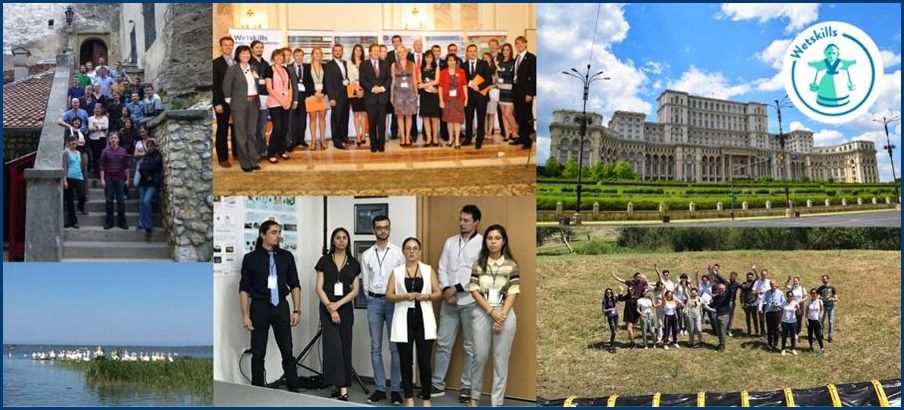 And the country itself is inspiring and diverse: from bustling Bucharest with its historic buildings and churches, the People’s Parliament and old Lipscani with bars and pubs, to idyllic smaller towns and villages in epic Transylvania, the arid lowlands of Wallachia (border with Bulgaria) and Europe’s largest bioreserve, the Danube Delta.
And the country itself is inspiring and diverse: from bustling Bucharest with its historic buildings and churches, the People’s Parliament and old Lipscani with bars and pubs, to idyllic smaller towns and villages in epic Transylvania, the arid lowlands of Wallachia (border with Bulgaria) and Europe’s largest bioreserve, the Danube Delta.
Information and registration: www.wetskill.com and info@wetskills.com
European Water Technology Week 2024
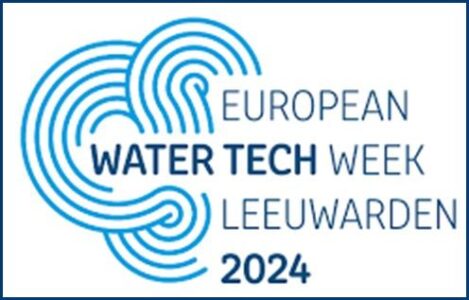 The international water technology world is descending on Leeuwarden, Capital of Watertechnology, between September 23 and 26.
The international water technology world is descending on Leeuwarden, Capital of Watertechnology, between September 23 and 26.
They will meet in Leeuwarden during the third European Water Technology Week (EWTW 2024).
Among others, representatives from business, universities and government will meet and inspire each other in the innovative climate of the Water Campus Leeuwarden.
So from September 23 to 26, take part in an exceptional event at the Stadschouwburg de Harmonie in Leeuwarden!
Discover the latest innovations and developments in water technology and network on the exhibition floor!
Most important highlights
Groundbreaking program: immerse yourself in a comprehensive program of sessions, presentations, the WIS Award and networking opportunities, all designed to inspire, educate and foster collaboration. 
Networking floor and exhibition:
Experience the heart of the event where exhibitors showcase their latest technologies, share insights and make valuable connections.
Registration for the exhibitor floor is now open.
As an exhibitor, get the chance to showcase your brand and connect with industry leaders.
Water Tech Tours:
Explore the latest developments and initiatives in water technology by participating in our Water Tech Tours, which offer valuable insights and networking opportunities. Convenient location: Located near the train station in Leeuwarden, the venue offers easy accessibility for participants.
If you come by car, there is ample parking nearby. Exclusive benefits: Members of the Water Campus Parties enjoy exclusive benefits such as exemption from registration fees for Wetsus participants, reduced rates for Water Alliance members and customized booths for exhibitors.
Registration open now!
Don’t miss this unique opportunity to be part of the future of water technology.
Register now to secure your spot!
Keep an eye on this website for more information and updates or visit https://wateralliance.nl
The water sector consists of many sub-sectors such as the agricultural sector.
This is an example where the cross-sectoral aspect (which we have written about before) partly comes into play, and in this regard we would like to draw attention to the “glaring” shortage of irrigation facilities in Romania, as desertification has occurred in some parts of the country, causing the loss of valuable agricultural land.
Retail sector
Dutch retailer Action Will Enter Romanian Market Next Year
Dutch retailer Action, known for its wide range of products at affordable prices, has announced that it will open its first stores in Romania in 2025.
Although few details are known yet, representatives of the company confirmed expansion plans.
“We plan to open our first stores in Romania in 2025. At this time it is too early to go into other details,” the company’s representatives said. 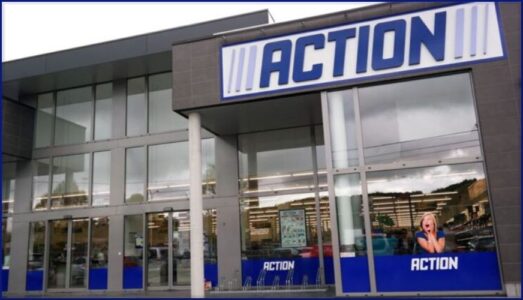 “About two-thirds of our range is flexible, one-third is fixed, and more than two-thirds of all products cost less than €2. We introduce about 150 new products every week to keep our range relevant and to respond to our customers’ changing demand.” , said company representatives.
“About two-thirds of our range is flexible, one-third is fixed, and more than two-thirds of all products cost less than €2. We introduce about 150 new products every week to keep our range relevant and to respond to our customers’ changing demand.” , said company representatives.
Action has stores in 11 countries: Netherlands, Belgium, Germany, France, Austria, Luxembourg, Poland, Czech Republic, Italy and has expanded to Spain since 2022 and to Slovakia since 2023.
With more than 2,300 stores and 80,000 employees, Action realized net sales of €8.9 billion in 2022.
Action was founded by Gerard Deen and Rob Wagemaker, who were later joined by Boris Deen.
They opened their first store in 1993 in Enkhuizen and began expanding that same year by opening new stores.
Retail grows with acceleration on floor – threshold of 5 million square feet will be crossed in 2026-2027
The retail sector remains attractive both to large investors, investment funds seeking to develop projects worth hundreds of millions of euros, and to Romanian investors, who increasingly choose to develop retail programs in secondary or tertiary cities.  Consultants Colliers expect the threshold of 5 million square feet of modern commercial space to be crossed in 2026-2027, out of a current inventory of 4.6 million square feet.
Consultants Colliers expect the threshold of 5 million square feet of modern commercial space to be crossed in 2026-2027, out of a current inventory of 4.6 million square feet.
The cautious expectations of early 2024 have been exceeded, with mass-market and discount retailers resuming their accelerated expansion.
Wages are rising at about 14-15% annually, compared with inflation at 5%, offering good prospects for consumption in the medium term.
“In the past two to three months, the number of announced projects has doubled, from small retail parks to medium-sized, projects that could start within six to nine months.
Moreover, the proportion of local investments is high: 50% of the developments are made by local companies investing in retail parks.
Moreover, we already have 100,000 square meters of new retail space since the beginning of this year and Argeş Mall in Pitesti, developed by Prime Kapital, is dominating the market and becoming a regional player.
On the other hand, there would still be room for a mall in Bucharest, but now we have expansions, such as Promenada’s NEPI-Rockcastle project,” said Liana Dumitru, director of retail agency within Colliers Romania. 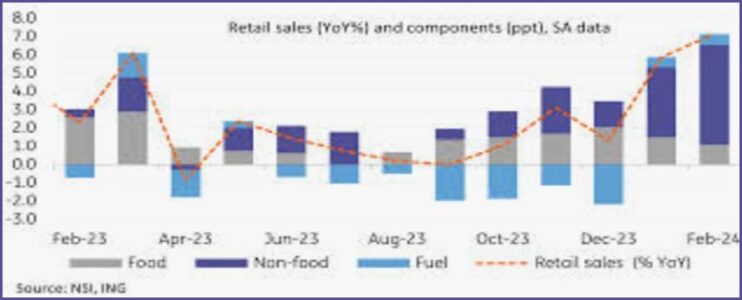 According to the consultants, the retail stock under construction amounts to 251,000 sqm, but there are also major projects announced that have not yet started, such as the plans in Cluj.
According to the consultants, the retail stock under construction amounts to 251,000 sqm, but there are also major projects announced that have not yet started, such as the plans in Cluj.
At the end of S1 2024, the stock of retail space increased 7% compared to S1 2023 to 4.6 million sqm.
“This year, large cities came to the fore after a 2023 dominated by shopping centers in smaller cities, with less than 100,000 inhabitants. In 2024, expectations from the beginning of the year were exceeded, and here the increase in purchasing power played a major role,” underlines Silviu Pop, CEE & Romania Research Director at Colliers.
Agricultural sector
Danone grows double and threatens Albalact(Lactalis)’s leading position in dairy sector
 The year 2023 brought more changes in the dairy and cheese industry.
The year 2023 brought more changes in the dairy and cheese industry.
One is the reaching of the threshold of 1 billion lei by the company Danone, owned by French investors, a threshold that Albalact had reached a year ago, and so there are now two giant companies in the profile industry.
The company from the province of Alba, Albalact, had a turnover of 1.16 billion lei in 2023, up about 7% from the previous year.
In the same year, Danone earned nearly 1.1 billion lei, after an 18% jump from the previous year, according to calculations by ZF based on data from the previous year.
So with a double-digit growth rate, Danone came close to the current leader and threatens to take its position.  In fact, Danone had a profit of nearly 70 million lei, more than five times that of 2022, while Albalact’s profit fell last year, which was 21 million lei compared with 25 of millions lei in 2022, public data also show.
In fact, Danone had a profit of nearly 70 million lei, more than five times that of 2022, while Albalact’s profit fell last year, which was 21 million lei compared with 25 of millions lei in 2022, public data also show.
Lactalis, like Danone, is of French origin.
So is the question legitimate whether here is a challenge for Dutch FrieslandCampina?
Peter de Boer of the DN Agrar Group on achieving IR success two years after the IPO
During the IR Magazine Awards – Europe 2024, we spoke with Peter De Boer, head of IR at the Romanian integrated zootechnical farming company, DN AGRAR Group.  The two-year-old listed company entered the awards for the first time this year, earning a nomination for best retail IR strategy.
The two-year-old listed company entered the awards for the first time this year, earning a nomination for best retail IR strategy.
Peter de Boer was among Romania’s top 10 entrepeneurs under 40. 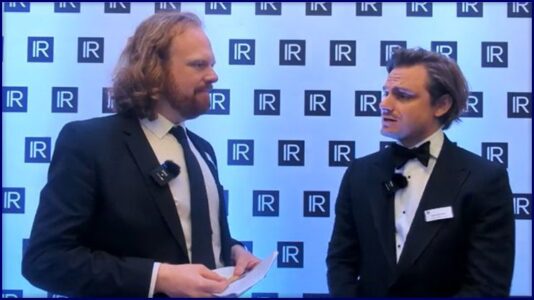 In the interview before the ceremony, De Boer talks about the company’s growth despite challenges such as low liquidity in the Romanian secondary market.
In the interview before the ceremony, De Boer talks about the company’s growth despite challenges such as low liquidity in the Romanian secondary market.
He explains the efforts behind DN AGRAR Group’s IR strategy, highlighting the company’s digital initiatives and the crucial role private investors play in DN AGRAR’s success.
For more information see the links: https://m.zf.ro/eveniment/video-ce-spune-un-olandez-care-are-compania-listata-la-bvb-despre-22421794https://www.youtube.com/live/ZLs8pvwJgFo?si=kp0SPRqV2H1Gv8dc
Romania – shortage of millions of pig carcasses
Prime Minister Marcel Ciolacu says there is a shortage of about 4 million pig carcasses in Romania and that future programs developed by the Ministry of Agriculture will increase the number of pigs produced to 8.7 million.
Prime Minister Ciolacu went with the Minister of Agriculture and Rural Development, Florin Barbu, to the company Landbruck SRL in Săhăteni, which is investing in a pig breeding facility with a capacity of 3,000 stays for breeding.
The total value of the investment is 16,410,000 euros and the value of the state aid is 13,128,000 euros, or 64,357,394.4 lei, respectively. 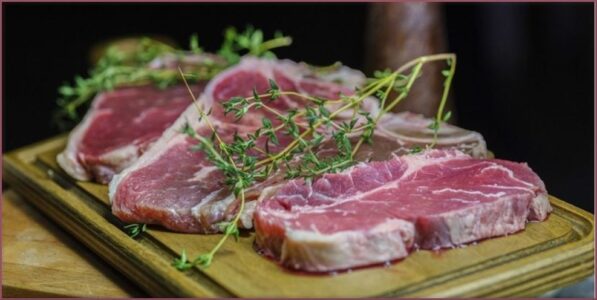 “The biggest meat shortage Romania has is pork. We have a deficit of about 4 million carcasses. There are 25 centers in operation, it was really a budgetary effort, because here is a funding from the budget of almost 80% and we will.” produce about 1.2 million piglets,” said Prime Minister Marcel Ciolacu.
“The biggest meat shortage Romania has is pork. We have a deficit of about 4 million carcasses. There are 25 centers in operation, it was really a budgetary effort, because here is a funding from the budget of almost 80% and we will.” produce about 1.2 million piglets,” said Prime Minister Marcel Ciolacu.
The Minister of Agriculture, Florin Barbu, said that about 4 million piglets are currently produced in Romania, but future programs to support farmers will bring this number to about 8.7 million.
“Currently, Romania produces somewhere between 3.5 and 4 million piglets, while Romania’s self-sufficiency rate in pork is close to 9 million pigs.
These investments ensure that piglets are needed for fattening farms.
We come to support the farmers because an imported piglet costs 125 euros, produced in Romania 60 euros For an import of 4 million piglets from abroad, 250,000 million euros leaves Romania, money that should have remained in the farmers’ accounts.
I spoke with the Prime Minister and he agreed to launch a new program of 90,000 places for breeding sows in Romania.
Through these projects we will provide the necessary 8.7 million pigs in Romania over the next four years,” Minister Barbu said.
Agriculture Minister announces October compensation for drought-affected lands
Agriculture Minister Florin Barbu said Friday at a press conference in Slatina that compensation for the calamities caused by the drought will be paid to farmers in October so that they will have funds for the fall campaign. Florin Barbu said that agricultural crops on an area of about two million hectares were affected by the drought and that the minimum compensation amount per hectare will be 200 euros.
Asked whether Romania will be able to meet its cereal needs in the context of this year’s drought, the minister assured that our country has the necessary cereals, both for its own consumption and for export, as crops are irrigated on an area of 1, 6 million hectares.  So from the point of view of food security, Romania has the necessary grains both for its own consumption, including the consumption part of the livestock sector, and for export,” Florin Barbu said.
So from the point of view of food security, Romania has the necessary grains both for its own consumption, including the consumption part of the livestock sector, and for export,” Florin Barbu said.
On the discussions about anti-hail missile systems, the minister said it is a research in progress, but the system will continue to function and be developed.
Another sound comes from Ştefan Gheorghiţă, co-founder of Triagroexim, a 600-hectare grain farm in Brăila.He added that for a 500-600-hectare farm, the investment in irrigation systems and equipping the necessary equipment exceeds 1 million euros, and if entrepreneurs and banks have taken on such a large investment, the government should ensure a proper water structure to enable irrigation.
It might be interesting to check with the Dutch company Netafim, which also operates in Romania because due to climate changes in recent years, droughts are repeating themselves and a more sustainable solution must be sought.
Farmers are dissatisfied with the lack of water for irrigation.
Associations want authorities to amend legislation The lack of irrigation water is creating tense situations across the country, warn representatives of the Forum of Professional Farmers and Processors from Romania (APPR Forum).
The farmers are asking the authorities to supplement legislation regarding unfinished irrigation targets and for which takeover protocols cannot be concluded with the Water User 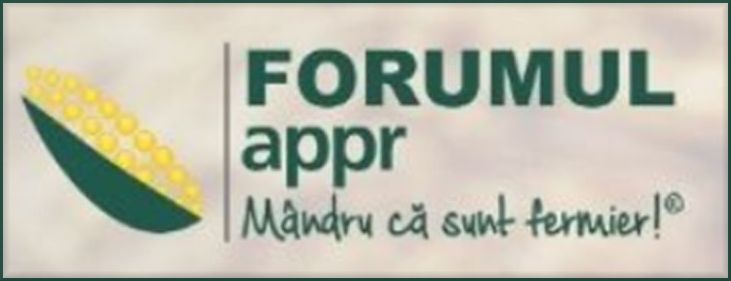 Organizations for Irrigation (OUAI) in the affected areas, reports Agerpres.
Organizations for Irrigation (OUAI) in the affected areas, reports Agerpres.
“The climate period we are going through now, with temperatures constantly exceeding 40 degrees Celsius, after a total lack of precipitation for more than 60 days in many regions, becomes critical for farmers and for the entire population, leading to significant and irreversible losses of We want the rehabilitation of irrigation systems, such as re-pumping stations, and we mention our requests for investment in specific infrastructure, especially in those provinces where, even in 2024, we are talking about a five-year extreme soil drought. so far, farmers do not have the ability to irrigate, even if they have canals near their farms, because they are not functional/or unexploited and which are not part of ANIF’s patrimony and for which no acquisition protocols can be concluded. with the OUAIs in the area in question, although they could be rehabilitated by them. The problem would be solved relatively quickly by the adoption of a normative law,” according to an APPR Forum press release.
As an example, the organization points to the situation at the Spiru Haret pumping station, owned by ANIF Brăila (the water supplier for the entire Ialomiţa-Călmătăui Terrace), where there are problems with increasing pumping capacity, leading to a drop in levels in the canal network, implicitly leading to the partial cessation of irrigation in vast areas in Ialomiţa and Brăila provinces.
Transport and Logistics Sector
European parliament wants loss compensation for transport sector
The European Parliament calls on the European Commission to compensate for the financial losses suffered by Romania and Bulgaria as a result of not being accepted into Schengen Also, the European Parliament asked the European Commission to estimate the financial losses, unrealized profits and environmental damage caused by Romania and Bulgaria, as well as the Union as a whole, from 2011, as a result of Romania and Bulgaria not being members of the Schengen area.
According to Parliament, the Commission should also analyze the possible compensation mechanisms for these losses. 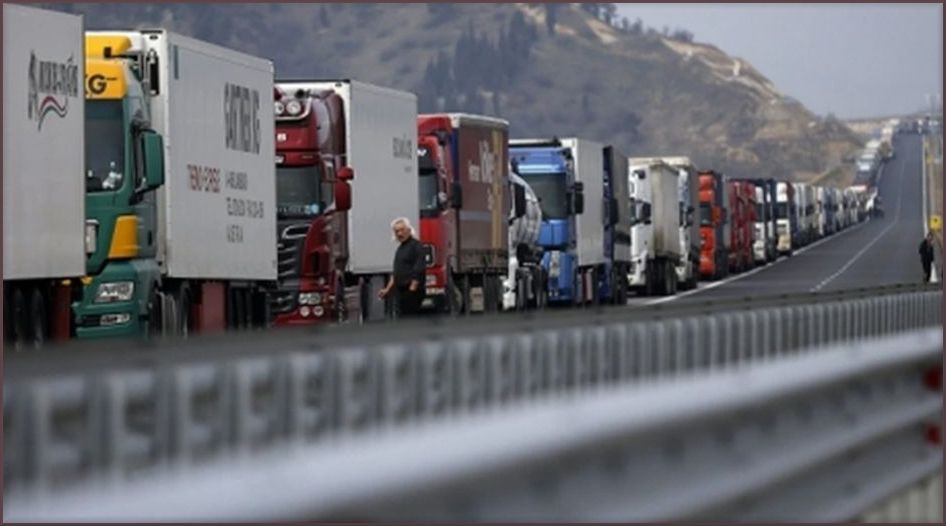 Romania and Bulgaria would be entitled to compensation for the financial losses they suffered as a result of the “negative and unjustified” decision taken on the two countries’ accession to the Schengen area, taking into account the financial losses incurred since June 2011, according to the European Parliament’s resolution of July 12, 2023, on accession to the Schengen area, published today in the Official Journal of the EU.
Romania and Bulgaria would be entitled to compensation for the financial losses they suffered as a result of the “negative and unjustified” decision taken on the two countries’ accession to the Schengen area, taking into account the financial losses incurred since June 2011, according to the European Parliament’s resolution of July 12, 2023, on accession to the Schengen area, published today in the Official Journal of the EU.
Resuming “Parliament calls on the Commission to estimate the financial losses, unrealized gains and environmental damage of Romania and Bulgaria, but also of the Union as a whole, as a result of Romania and Bulgaria not being members of the Schengen area from 2011; The Commission should analyze the possible compensation mechanisms for the financial losses suffered by Bulgaria and Romania as a result of the negative and unjustified decision taken on the accession of the two countries to the Schengen area, taking into account the financial losses incurred since June 2011
What are the losses from the non-acceptance of Romania, Bulgaria and Schengen?
According to the Resolution, the two states have suffered collateral and irreparable damage, such as that caused by the increase in CO 2 emissions generated by the millions of vehicles waiting several hours each year at border controls.
At the same time, this stands in stark contrast to the Union’s climate neutrality goals.
“The high level of pollution caused by the thousands of vehicles queuing daily and waiting for several hours or even days to cross the borders between Hungary and Romania, Romania and Bulgaria and Bulgaria and Greece also poses a threat to the environment, as well as to the health of drivers, customs staff and people living in border-crossing areas; whereas evidence-based information has shown that 46,000 tons of CO2 are emitted annually as a result of the decision not to abolish internal border controls for Romania and Bulgaria,” the resolution said.
Parliament’s data also shows that the queues created by waiting trucks exceeded 25 km at Romania’s western border in 2022, while the waiting time for trucks crossing the borders between Schengen member states was between 10 and 30 minutes in 2021.
With many crossings reporting no delays.
Former Economy Minister Florin Spataru estimated that Romania loses 10 billion euros annually due to not being accepted into Schengen.
What more can be doneParliament also stresses the need to analyze the current and potential future possibilities of referring the matter to the Court of Justice of the European Union.
The institution’s position comes in the context where, in October 2023, the Court of Justice of the European Union (CJEU) rejected as “manifestly inadmissible” the action for annulment filed by Romanian MEP Eugen Tomac against the EU Council regarding the decision
not to allow Romania into Schengen.
“Parliament regrets and underlines with great concern the fact that the negative decision on the accession of Romania and Bulgaria to the Schengen area is instrumentalized by anti-EU propaganda, including Russian propaganda, to the detriment of the EU’s foreign policy objectives; points out that this decision, even if not based on legally sound and enforceable criteria, undermines the EU’s ability to promote its values and good governance in countries outside the EU, including the acceding countries. The accession of Romania and Bulgaria to the Schengen area is essential because an expanded Schengen area without internal border controls will make the EU stronger. We call on all Member States to fulfill their obligation of loyal cooperation with Romania and Bulgaria regarding the accession of these two Member States to the Schengen area, in accordance with Article 4(3) of the TEU, and we note that no Member State would do so arbitrarily violating the rights of other Member States, including their legitimate rights to join the Schengen area once the criteria have been met,” the European Parliament resolution said.
Romania entered the Schengen area with air and sea borders on March 31, 2024, but no decision has yet been made on extending it with land borders.
The underlying reason for this is that Austria is holding the European Union hostage for internal party political reasons because they still follow the unanimity model.
This unintentionally undermines the unity of the European Union.
The rules on voting in the Council are found in Article 16(4) and (5) of the EU Treaty and Article 238 of the EU Operating Treaty.
The Lisbon Treaty provides for three different voting rules: the Council votes by simple majority, qualified majority or unanimity (unanimity).
The misuse of unanimity requires converting the voting procedure to qualified majority voting
Major improvements in Romanian infrastructure, but still much work in progress.
Economy thriving despite limited resources.
Romania crossed the threshold of 1,000 kilometers of highways in 2023.
Bucharest in 2024 still does not have a functional belt, road or rail, we still do not have modern infrastructure, as also to effectively connect the counties But with limited resources and obstacles at the international level, such as keeping Romania out of the terrestrial Schengen area, although the standards have been met for more than a decade, the local economy is accelerating strongly.
For example, according to Eurostat, Romania’s average per capita consumption in 2023 was 89% of the European average, surpassing Spain, Poland, Portugal and Greece.
Only Lithuania surpasses Romania among the countries of Central and Eastern Europe.
Moreover, Romania’s economic growth is higher than that of Hungary or Poland.
In Bucharest, the average monthly income exceeded the threshold of 6,000 lei net, which is why Coldplay held two “closed house” concerts, and at the national team’s first game in Germany, at the European Championships, 50,000 Romanians chanted “Come on Romania! “. 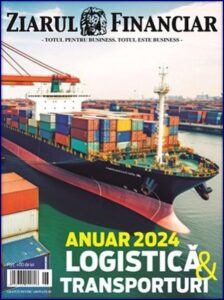 Also by 2024, we can have about 100 kilometers of highway completed, a first in the last decade and also a first. Bucharest will no longer be an obstacle to the development of the port of Constanţa, because it will be possible to pass directly. From the A2 to the A1 and A0, the new belt of Bucharest. Work on the Olt Valley is accelerating, and in 2024 the first highway sections on the A7, the Moldovan highway, will also take place. At that time, plans are already being made for the A8, the Unirii highway, or the A6, the southern highway. Also enable the accelerated development of Muntenia. The warehouse market in Romania, at 7.3 million square meters, is still at a considerable distance from the Czech Republic, which had 11 million square meters in 2023, and the region’s undisputed leader, Poland, with an inventory of nearly 29 million square meters…. But it is growing year by year. Developers have projects under construction totaling several hundred thousand square meters in various cities across the country. Bucharest remains the favorite destination for developers, with about 50% of the projects to be delivered located around the capital, while Brasov, Timisoara, Slatina, Arad and Sibiu are also benefiting from significant new spaces. Braşov and Târgu-Mureş are just two examples that attracted new production units in 2023. Although Braşov has a well-educated workforce, thanks to a dual education system in which Bosch, Continental and Star Assembly have invested, Târgu-Mureş is connected to modern European infrastructure thanks to Highway 3, which goes to Cluj. Thanks to the Dacia and Ford Otosan factories, Romania can attract new parts suppliers, as well as battery manufacturers to supply the two. Two important investments in this direction were announced in Galati and Brăila. For more information: Yearbook Transport available from Ziarul Financiar, Romanian language.
Also by 2024, we can have about 100 kilometers of highway completed, a first in the last decade and also a first. Bucharest will no longer be an obstacle to the development of the port of Constanţa, because it will be possible to pass directly. From the A2 to the A1 and A0, the new belt of Bucharest. Work on the Olt Valley is accelerating, and in 2024 the first highway sections on the A7, the Moldovan highway, will also take place. At that time, plans are already being made for the A8, the Unirii highway, or the A6, the southern highway. Also enable the accelerated development of Muntenia. The warehouse market in Romania, at 7.3 million square meters, is still at a considerable distance from the Czech Republic, which had 11 million square meters in 2023, and the region’s undisputed leader, Poland, with an inventory of nearly 29 million square meters…. But it is growing year by year. Developers have projects under construction totaling several hundred thousand square meters in various cities across the country. Bucharest remains the favorite destination for developers, with about 50% of the projects to be delivered located around the capital, while Brasov, Timisoara, Slatina, Arad and Sibiu are also benefiting from significant new spaces. Braşov and Târgu-Mureş are just two examples that attracted new production units in 2023. Although Braşov has a well-educated workforce, thanks to a dual education system in which Bosch, Continental and Star Assembly have invested, Târgu-Mureş is connected to modern European infrastructure thanks to Highway 3, which goes to Cluj. Thanks to the Dacia and Ford Otosan factories, Romania can attract new parts suppliers, as well as battery manufacturers to supply the two. Two important investments in this direction were announced in Galati and Brăila. For more information: Yearbook Transport available from Ziarul Financiar, Romanian language.
KLG also saves CO2 emissions with solar panels on their trucks
With every liter of fuel we save, that means 2.7 kilograms less CO2 emissions! 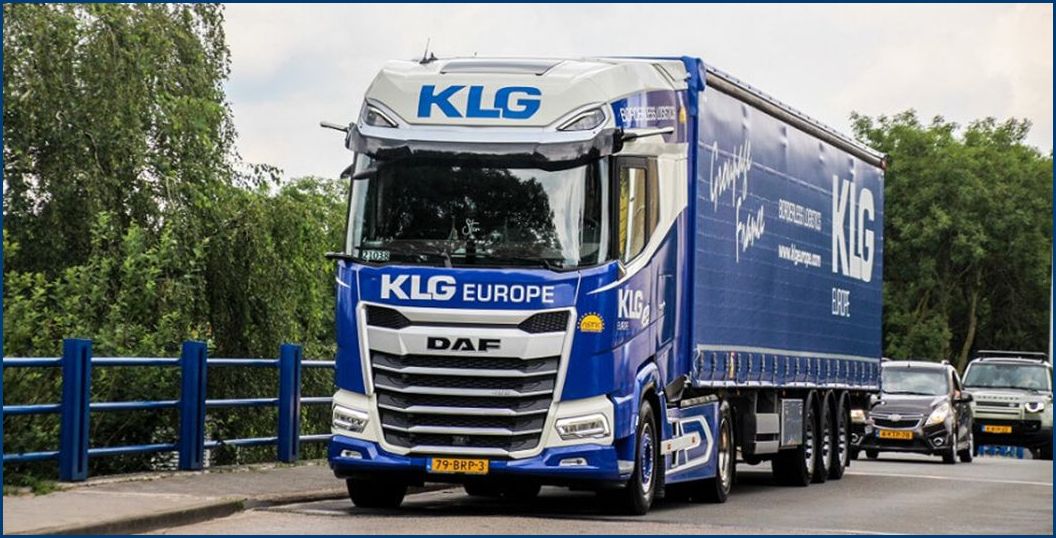 Thanks to solar panels on the roof of the truck, we save 500 to 700 liters of fuel per tractor annually!
Thanks to solar panels on the roof of the truck, we save 500 to 700 liters of fuel per tractor annually!
Currently, 5% of their fleet is equipped with this technology.
The advantage of the solar panels is that the alternator is no longer on while driving (less friction).
But also idling the engine to keep the refrigerator, air conditioning, TV, etc. on is a thing of the past.
In addition, because the batteries no longer discharge, the service life is longer.
Want to learn more about our sustainability initiatives?
Then check out our website www.klgeurope.com
International transport route Caspian Sea – Black Sea will be signed in Bucharest.
What does it mean for Romania?
Caspian-Black Sea connection will be signed in Bucharest.
In a major development for regional connectivity and economic integration, Azerbaijan, Turkmenistan, Georgia and Romania will formalize the creation of the “Caspian Sea-Black Sea” international transport route through a quadrilateral intergovernmental agreement to be signed in Bucharest later this year, Azernews announced. 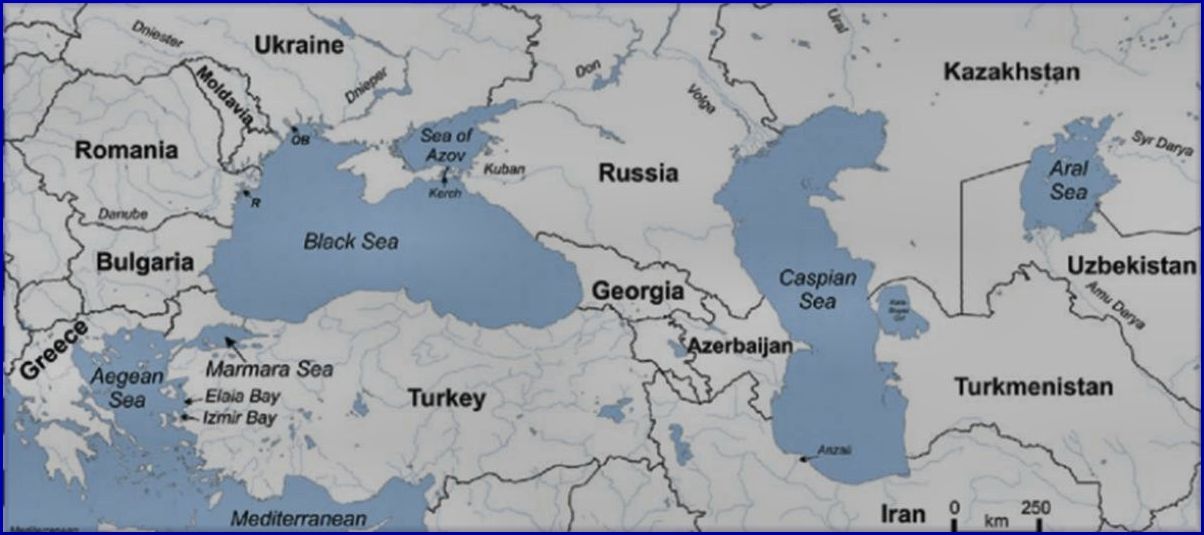 This initiative aims to simplify and improve the movement of goods between the Caspian Sea and the Black Sea, ultimately connecting these regions more closely to European markets.
This initiative aims to simplify and improve the movement of goods between the Caspian Sea and the Black Sea, ultimately connecting these regions more closely to European markets.
The construction of the international transport route “Caspian Sea – Black Sea” marks an important stage in regional cooperation and economic integration between Azerbaijan, Turkmenistan, Georgia and Romania.
It not only improves connectivity between the Caspian Sea and the Black Sea, but also strengthens the position of these countries in the global trade network.
By leveraging their geographical advantages and strengthening investments in infrastructure, the participating countries are poised to unlock new economic opportunities, boost economic growth and promote greater regional stability.
An analysis by Azernews reveals the benefits for each country involved.
Benefits for Azerbaijan could benefit significantly from the construction of the “Caspian Sea – Black Sea” route.
Benefits for Romania For Romania, the agreement offers opportunities to expand its role in facilitating Eurasian trade.
Romania’s Black Sea port infrastructure can serve as a gateway for goods traveling to and from Azerbaijan, Turkmenistan and other Caspian countries.
This influx of trade will stimulate economic growth in Romania’s maritime, logistics and related service sectors.
Moreover, increased connectivity is in line with Romania’s broader economic strategy to become a key player in Europe’s logistics and transportation infrastructure.
This joint effort highlights the potential of mutually beneficial partnerships to improve connectivity and promote economic prosperity across Eurasia.
As the agreement moves closer to implementation, it is expected to catalyze further developments in trade, infrastructure and regional cooperation, setting a precedent for future integration efforts in the broader Caspian and Black Sea region.
Shipbuilding Sector
Damen drags in record number of orders due to demand for ‘green’ ships
The Netherlands’ largest shipbuilding group Damen Shipyards secured a record number of orders last year.
This was mainly due to the increased demand for green ships. 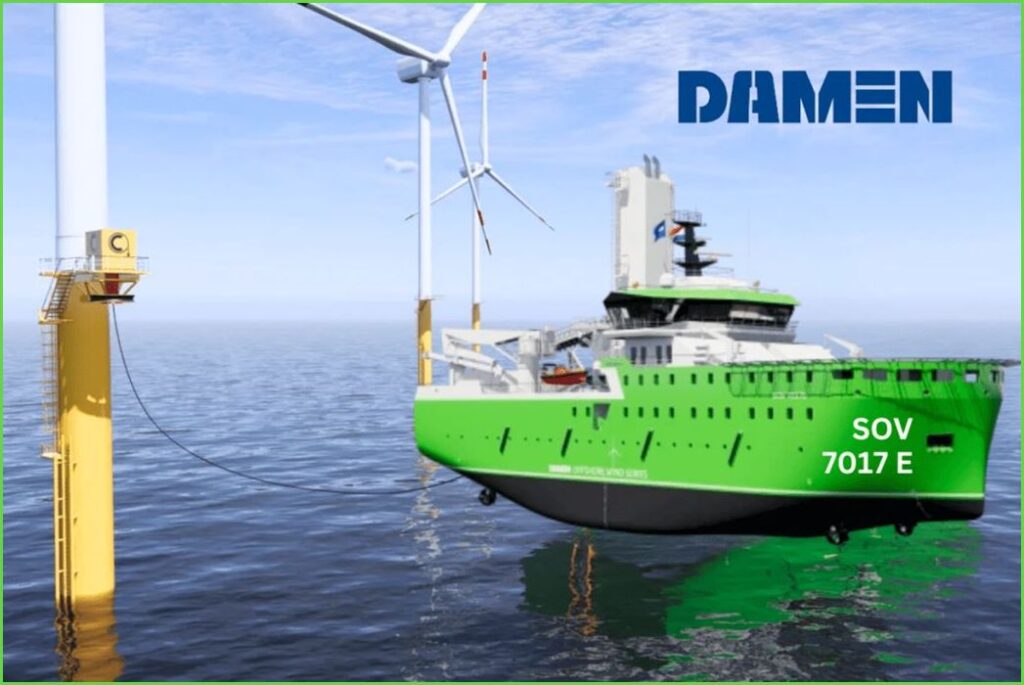
- Consequently, the order book grew from 8.8 billion to 11.3 billion euros.
The group further recorded sales in excess of 3 billion euros for the first time. - Damen delivered 100 new vessels last year, almost as many as in the previous year.
These included a patrol vessel for the South African Navy, seven barges, 75- and 58-meter yachts, 12 coastal freighters and several tugs.
For the Royal Navy, the Zr.
Ms.
Johan de Witt was modernized. - The most striking thing in 2023, according to top executive Arnout Damen, was making shipbuilding more sustainable.
There are more and more “green” ships in the order book.
For example, Port of Antwerp-Bruges ordered an all-electric harbor tug. - Sustainability is therefore one of the reasons, according to Damen, that the order book has grown by more than 25 percent in the past year.
Clean energy – Damen D16 engine receives certificate for EU Stage V emissions regulations
Damen Shipyards Group has introduced a new engine in combination with a Damen marine emission reduction system.
The Damen D16 recently received EU Stage V certification.
The Damen D16 is a marine engine and after-treatment system designed and developed in-house by Damen Sustainable Solutions.
The goal is to reduce emissions and increase energy efficiency, supporting Damen’s goal of becoming the world’s most sustainable maritime solutions provider. 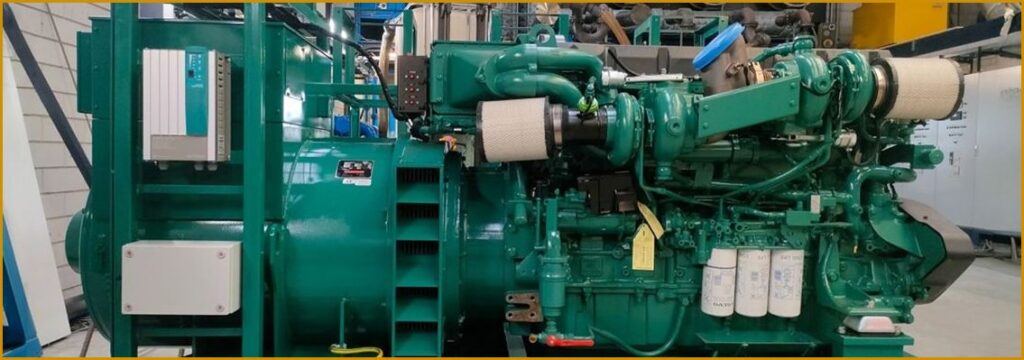 A sustainable maritime solutionThe Damen D16 is an extension of the current portfolio the company is marketing.
A sustainable maritime solutionThe Damen D16 is an extension of the current portfolio the company is marketing.
The pure marine engine and marine aftertreatment system enables Damen’s customers to remain competitive, flexible and sustainable with this clean and certified solution.
Based on the Volvo Penta D16 IMO II, the Damen D16 features low fuel consumption, SOX, NOX, CO2 and noise reduction in one unit and a flexible layout that delivers reliable power.
The engine can also run on biomass-based HVO (hydrotreated vegetable oil), which offers an even greater reduction in CO2 emissions.
André de Bie, Sales & Operations Manager Sustainable Solutions at Damen, said, “The team tested the engine extensively in conjunction with the Damen marine emission reduction system. The EU Stage V certification was a welcome reward and we at Damen are very proud of this. It allows us to offer our customers more efficiency and flexibility, whatever the future brings, on any water in the world.”
Important certification
The EU Stage V engine certification process was completed together with Volvo Penta dealer Haisma in Harlingen, Netherlands.
The certification is valid for the Volvo Penta D16 MH engine family and certified for a wide range of IWA and IWP categories.
With this achievement, Damen can now offer its customers a proven emission reduction system that meets the requirements of EU Stage V, ULEV and IMO Tier III regulations and is certified with HVO100, EN590, ISO8217 – DMA fuel.
Versatile vessels for the future
The Damen D16 engine can be used on various types of vessels in the marine industry, including tugs, workboats, high-speed craft and barges, and is available for new construction and refurbishment.
Through optimal fuel consumption, it contributes significantly to reducing the vessel’s CO2 emissions and promotes the advancement of environmentally conscious shipping
Opening of the new facility of Royal Van der Leun Romania!
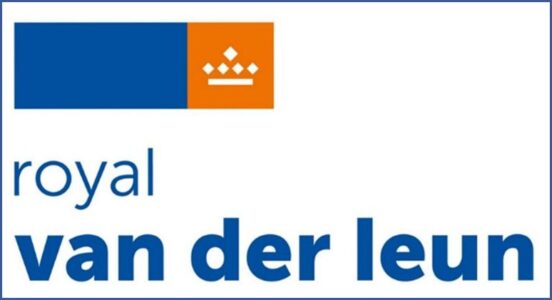 As an important partner and supplier to Damen Shipyards, they recently opened their new workshop and office in Galati where, by the way, they have been located for 8 years.
As an important partner and supplier to Damen Shipyards, they recently opened their new workshop and office in Galati where, by the way, they have been located for 8 years.
They strive to be as close to their customers as possible, which guarantees and supports a good cooperation.
We wish Anly Den Breejen, NxG trainee, Arie Mijnster, General Director of Van der Leun Romania, and Andrei Basalic, Technical Manager of Van der Leun Romania with reaching this milestone!
Still doubts about Dutch contribution in building submarines in France
All parties competing for the job had to demonstrate that the Dutch economy would benefit.
But now that the choice has fallen on the French company Naval, there are doubts as to whether that will work out in practice.
“The question is how much work will end up with Dutch companies,” says Wouter Kruijt, naval expert and former director of shipbuilder IHC.
“I have my doubts about that.”
One of the other contenders was Sweden’s Saab, which submitted a bid together with Dutch shipbuilder Damen.
That alliance hoped to win the order by betting on the added value for the Dutch economy.
After all, the submarines would be built in the Netherlands.
The French state company Naval is also carrying out the order in cooperation with a Dutch shipbuilder: IHC in Kinderdijk.
According to insiders, the Naval/IHC proposal states that 40 percent of sales will go to Dutch IHC.
But IHC’s director himself said recently in Schuttevaer magazine that he expects the added value of the deal with the French will be limited.
Secret
Exactly what was in the package of requirements from the Netherlands when the tenders were requested is a secret.
So also how big a share Dutch companies should have in the construction.
Kruijt says he heard from sources “close to the fire” that the Netherlands is asking for a contribution of at least 5 percent.
Kruijt therefore does not expect Naval to adhere to the 40 percent figure mentioned in practice.
“I would be surprised if that is set in hard contracts. I think it’s more toward 10 or 15 percent.”
Kruijt also feels that the French do not have the best history when it comes to collaborations with other countries.
He points to an earlier difficult deal between Naval and Australia.
“My confidence in the French is not high,” he says.
‘Construction can be done in the Netherlands’
Where the Cabinet has mainly gone wrong, according to Kruijt, is to lump the design and construction of the submarines together.
“That a foreign party is involved in the design, I think is a good action. Because indeed we have not designed and built new submarines since the Walrus in the 1990s. But about 80 percent of the building could be done in the Netherlands today. That technology, knowledge and skill are still there.”
So by giving the contract to Naval, Kruijt says, not only does a lot of money go abroad, but also knowledge.
“You are now stuck with the French for the next thirty years. Because if you want to be able to maintain it, you also have to have built it to a significant extent.”
Why the choice fell to Naval after all is anyone’s guess, Kruijt says.
“There has been enormous lobbying in any case. Last April, Macron paid a state visit to the Netherlands during which this order was high on the agenda. Apparently that lobbying has been successful.” 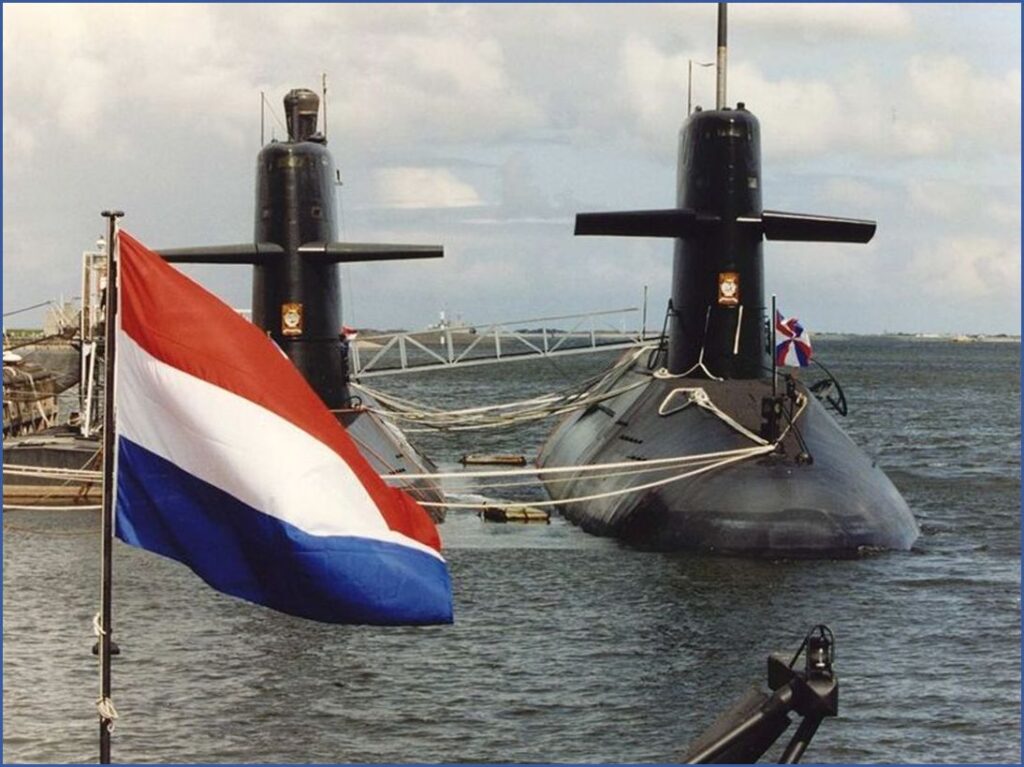
Government as a market player
Governments regularly compete with companies.
Think of city guards securing business parks. To avoid distortion of competition, governments must follow rules of conduct.
Rules of conduct for the government
The Market and Government Act (which amended the Competition Act) contains 4 rules of conduct.
These rules apply to the entire government.
Passing on costs
Governments must pass on all costs they incur for a service in the price.
Does a municipal parks department also maintain private gardens?
If so, governments must charge the full cost of that private maintenance to the owners of the private gardens.
Favoritism ban
Governments may not reuse the data in their possession for other activities.
This is only allowed if other organizations or companies also have access to the data (under the same conditions).
For example, is a municipality using the municipal register to send a commercial mailing?
Then this is only allowed if it makes the data available to others under the same conditions.
Companies can thus compete with the government on an equal footing.
Separation of functions
Does a government have an administrative role in certain services, and does it also perform those services itself?
If so, the same persons may not be involved in both governance and implementation.
The municipal official who handles the application for a logging permit cannot offer logging services to private individuals at the same time.
If a government offers goods or services on the market, it must comply with these rules of conduct.
This is the case, for example, when the municipality rents out its gymnasium.
If a government offers goods or services on the market, it must comply with these rules of conduct.
This is the case, for example, when the municipality rents out its sports hall.
Or if it maintains the green spaces at private homes.
Exceptions to the competition rules of conduct
The rules of conduct apply to governments that carry out economic activities.
Either themselves or through their public companies.
However, there are a number of exceptions to this.
The Guide to the Market and Government Act describes these exceptions.
Using a “decision tree” and by answering 9 questions, governments can determine whether the Market and Government Act applies to them.
This manual is a practical guide for authorities that have to deal with this law.
Monitoring compliance with competition rules of conduct
The rules of conduct from the Market and Government Act are set out in the Competition Act. The Consumer and Market Authority (ACM) monitors compliance with these rules of conduct.
Complaints about unfair government competition
Do entrepreneurs find that the government is competing unfairly and not following the rules of conduct?
Then they can file a complaint with the organization they have problems with.
They can also take their complaint about unfair competition to the ACM.
The ACM can then investigate unfair competition.
Does the ACM determine that the law is being violated?
Then it can impose a fine for each day the law is violated.
Rutte III: preventing unwanted competition between governments and private parties
The government wants to prevent improper and undesirable competition between governments and private parties. The general interest provision of the Market and Government Act will therefore be tightened. This is stated in the coalition agreement ‘Trust in the Future’. French Naval is a state company so there is arguably no level playing field. That important aspect has so far remained undiscussed. Political responsibility for the ministry lies with the Minister of Defense. The current minister of defense is Ruben Brekelmans (VVD). There is also a secretary of state, Gijs Tuinman (BBB).Gijs Tuinman has been the secretary of state for defense since July 2, 2024. Information about the State Secretary of Defense can be found at rijksoverheid.nl.
Sector Tourism
TIME magazine placed the Via Transilvanica tourist route in the top 100 most beautiful places in the world to visit
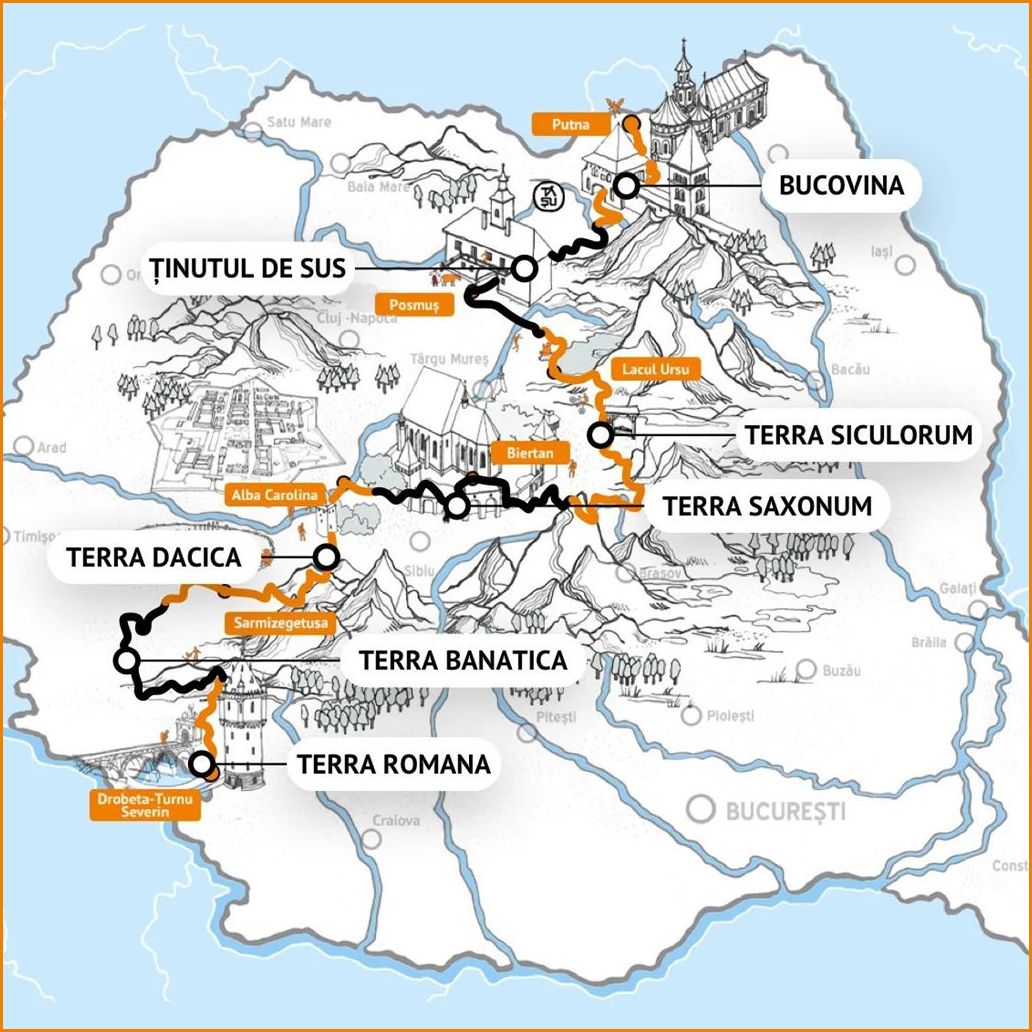
Photo source: viatransilvanica.com
The Via Transilvanica tourist route has been included by TIME magazine in the top 100 most beautiful places in the world to visit.
Via Transilvania, or “the road that unites,” is a tourist route of about 1,400 kilometers that crosses Romania diagonally, from Putna to Drobeta Turnu Severin.
Nicknamed “the road that unites” because of its focus on communities, the project takes travelers through traditional villages living off the land.
Visitors can book a room in a hotel or inn, or seek accommodation in the homes and parishes of local residents, where home-cooked meals are served with homegrown products,” says TIME magazine.
The route is reserved for hiking and biking.
Via Transilvanica is signposted with painted markers, signposts, and every kilometer there is an individually carved andesite bollard, bollards that probably form the longest art gallery in the world and accompany travelers on the walk, according to the website – dedicated to the tourist route.
NB Visitors to the Expert Meeting in Venlo will remember the promotion of this particular destination.
After all, tourism is an economic sector in its own right.
InstaSun – The 100% Romanian invention valued at 4 million euros just two years after its launch
A project created and developed entirely in Romania is revolutionizing the way we protect our skin from solar radiation.
InstaSun uses a unique combination of the latest technologies, energy sustainability and eco-friendly products.
Currently, InstaSun is the world’s only fully automated device that provides 360-degree protection from the harmful effects of UV radiation. 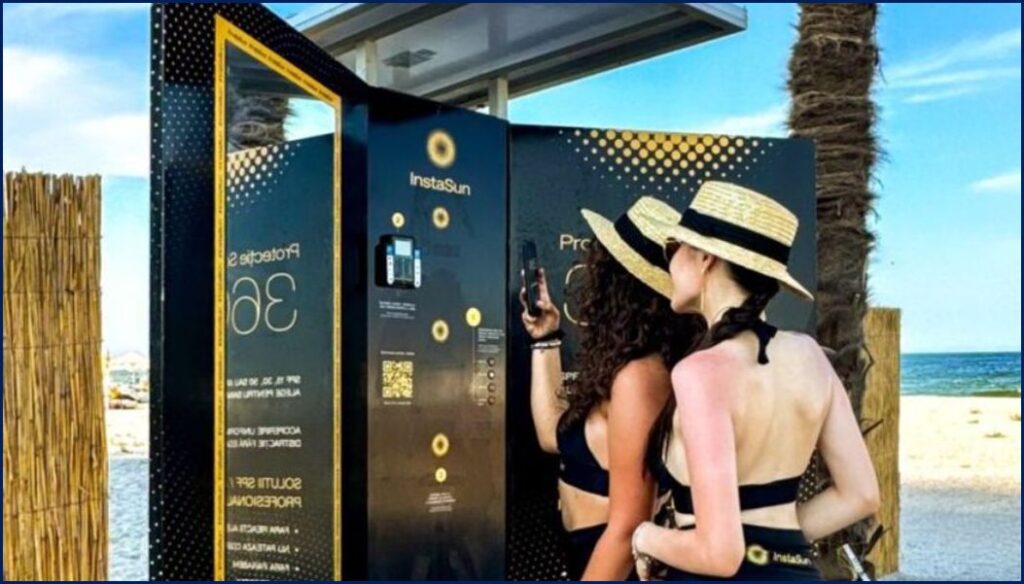 Introduced to the local market in 2023 after years of research and development, this 100% Romanian invention automatically and evenly applies sunscreen with different protection factors (SPF 15, SPF 30 and SPF 50) to the entire body in just 7 seconds, at the touch of a button.
Introduced to the local market in 2023 after years of research and development, this 100% Romanian invention automatically and evenly applies sunscreen with different protection factors (SPF 15, SPF 30 and SPF 50) to the entire body in just 7 seconds, at the touch of a button.
An additional aftersun lotion option completes protection needs for the beach.
The technology used and the high-quality protection products contribute to instant and enhanced skin protection, making the beach experience more luxurious, safe and comfortable.
The innovations and absolute novelty of the InstaSun concept worldwide make this product a remarkable business opportunity for investors.
The founders of InstaSun aim to attract as many partners as possible to rapidly develop and launch this product worldwide, capitalizing on the enormous potential of this automated sun protection method.
” InstaSun is not just a concept or a niche idea, it is a real revolution. We are talking about a company with a scale potential that we have not seen since the advent of the personal computer in the mid-70s. What makes this 100% Romanian project revolutionary is the synergy between environmental protection, human health and advanced technology! This combination can mean tremendous business success for anyone who joins the project. Now, in only the second year since its launch on the Romanian market, InstaSun is already valued at 4 million euros “, says Daniel Ionescu, CEO and co-founder of InstaSun.
Instant success on the Romanian coast
The first InstaSun devices were installed last year on the beaches of Mamaia and Mamaia Nord resorts.
Ergonomic and easy to place on the beach, these devices are designed to provide an ideal user experience.
They even include a mirror to check for sunscreen application or for the perfect selfie.
InstaSun’s design concept also offers unique promotional opportunities for different brands in special areas of the device.
Since its launch, major brands have promoted themselves in these special areas.
InstaSun has had immediate success, with many people choosing this more efficient way of applying sunscreen.
This summer, the number of locations on the Romanian coast with InstaSun devices has increased, to more than 25 units, and requests continue to come in for placement on other beaches.
Durability and premium solutions
InstaSun is designed as a completely self-sufficient energy system, powered entirely by solar panels.
In this way, each unit adapts perfectly to the beach environment and helps reduce its carbon footprint.
Payment for tanning sessions is made electronically, by card or contactless, without the hassle of cash.
All types of sunscreens used by InstaSun are developed and made in Romania, using high-quality ingredients that guarantee superior protection.
They are hypoallergenic, ideal for all skin types, paraben-free, do not stain swimwear or towels, can be safely used for children’s sun protection and are EU-certified. Using InstaSun for full sun protection also reduces the amount of plastic in the environment, as it reduces the amount of sunscreen people need to use in their personal packaging. The InstaSun project is available on the online investment platform SeedBlink and is ready to present its business potential to all companies and individuals who want to be part of this technological, environmental and sun protection revolution.
Romania qualifying for the Visa Waiver Program
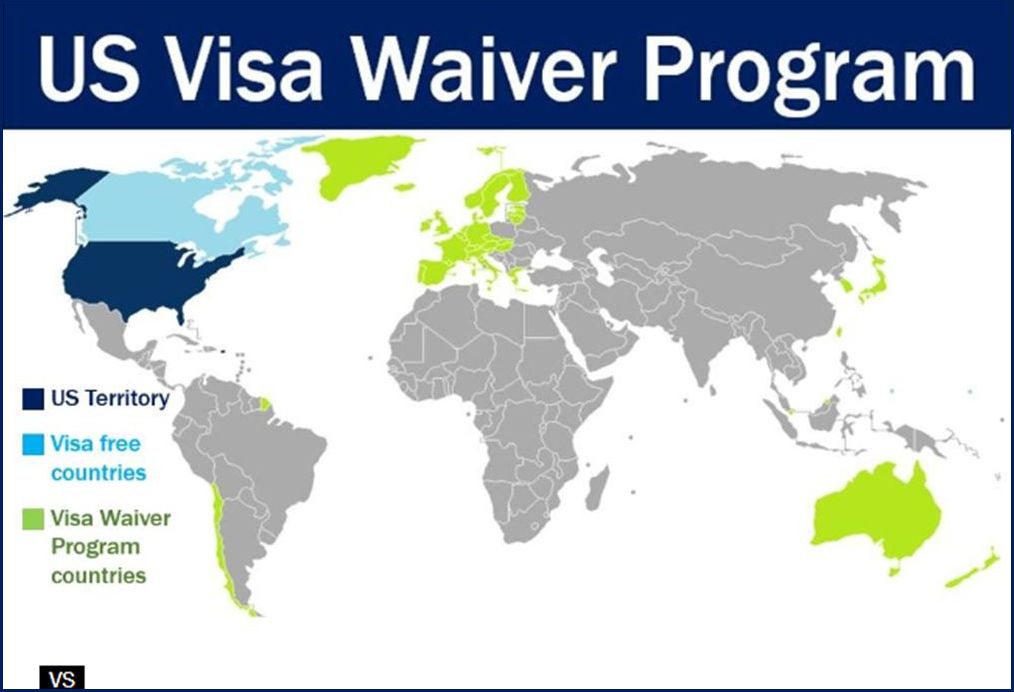 The Romanian government is committed to meeting the technical criteria for Romania’s entry into the Visa Waiver Program by Sept. 30, 2024, when the U.S. fiscal year 2024 ends.
The Romanian government is committed to meeting the technical criteria for Romania’s entry into the Visa Waiver Program by Sept. 30, 2024, when the U.S. fiscal year 2024 ends.
One of these criteria is the refusal rate of U.S. B1/B2 (business/tourism) visas of less than 3 percent for Romanian citizens.
Economical developments
Mergers and acquisitions in Central and Eastern Europe
Mergers & Acquisitions (M&A) is a business strategy that deals with buying, selling and combining different businesses.
Companies often choose M&A to achieve economies of scale, cross-sell opportunities, growth in market share, tax efficiency and other synergy benefits.
The map below depicts Central and Eastern Europe’s M&A activity. 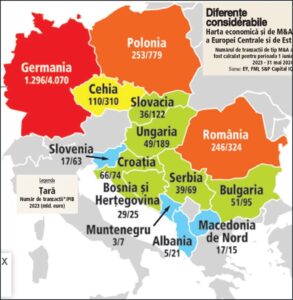 Romania ended up fighting with Poland for the title of the leading M&A market in Central and Eastern Europe, after the local market grew in recent years and practically went against the grain.
Romania ended up fighting with Poland for the title of the leading M&A market in Central and Eastern Europe, after the local market grew in recent years and practically went against the grain.
Between June 1, 2023 and May 31, 2024, 246 deals were initialled in Romania, compared to 253 in Poland.
Thus, there are only seven deals between the two countries.
Economically, however, the differences are significant.
Poland has a GDP of nearly 780 billion euros, while Romania stands at 324 billion euros in 2023.
“This marginal difference between Romania and Poland that we have seen over the past 12 months shows us that we are very close. This is because the markets in the region, in Europe, but also at the global level have shrunk significantly. This is also the case in Poland. Romania, on the other hand, went against the trend. From my point of view, from an economic perspective, Romania is a revelation of Europe,” said Iulia Bratu, partner and Head of Lead Advisory at the audit and advisory firm EY Romania.
Outlook 2024: more deals, fewer IPOs
Looking to 2024, Pitchbook expects interest in mergers and acquisitions to return and lead to growth, especially as the last monetary tightening cycle comes to an end and markets expect interest rate cuts in 2024.
This will fuel mergers and acquisitions and stimulate economies across the continent.
Another factor at play is the 2023 stock market listing drought, with sponsors leaving instead for corporate or private equity buyout funds via mergers and acquisitions.
Despite an improved growth outlook, Pitchbook does not expect a significant recovery in listings in Europe in 2024. 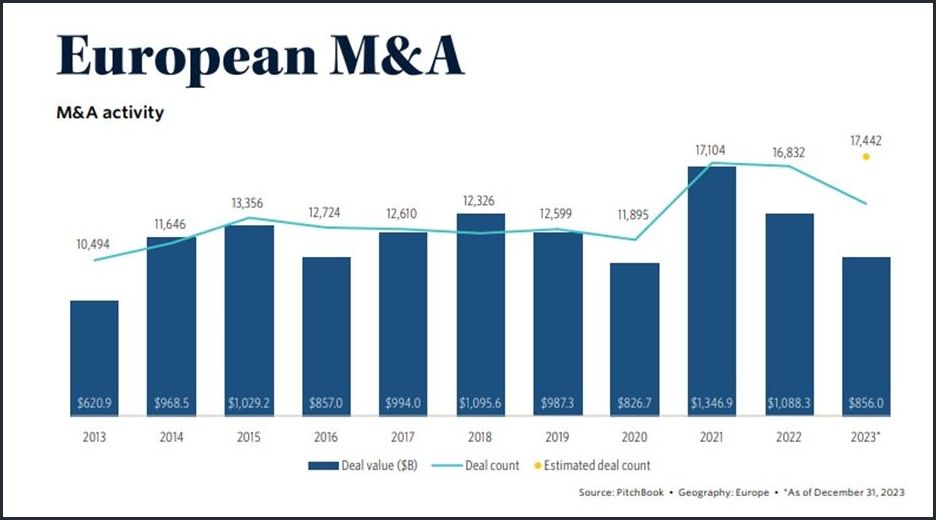 Therefore, mergers and acquisitions will continue to be the primary means of monetizing that growth.
Therefore, mergers and acquisitions will continue to be the primary means of monetizing that growth.
However, risks to increasing mergers and acquisitions in 2024 include persistent inflation, the fear of recessions and lingering geopolitical risks.
NOTES.
An IPO (or Initial Public Offering) is the initial public offering (IPO) of a private company.
In this, the company offers shares for the first time in a public stock offering.
In Dutch, we also speak of an IPO.
CIA report: Romania ranks 8th in Europe in terms of real GDP (purchasing power parity), ahead of Belgium, Austria or Sweden
According to a CIA report, Romania is a high-income EU member economy and ranks 8th in Europe and 34th worldwide in terms of real GDP (purchasing power parity).
In terms of real GDP per capita, Romania ranks 62nd in the world and 36th in Europe. 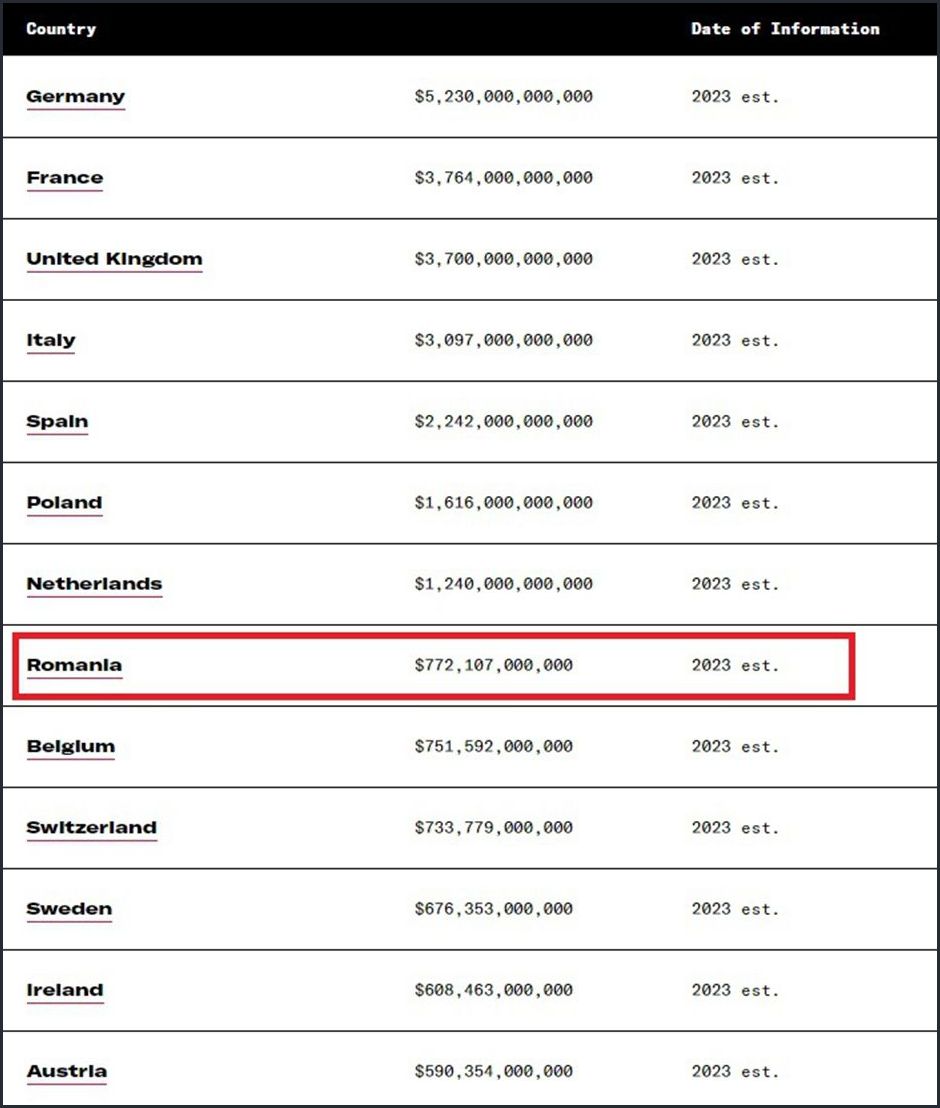 The CIA notes that Romania joined the Schengen area as of March 2024, while joining the euro was delayed due to convergence criteria.
The CIA notes that Romania joined the Schengen area as of March 2024, while joining the euro was delayed due to convergence criteria.
Persistent inflation is cited as one of the problems, with an economic recovery determined by consumption and investment financed by the EU.
Romania is also said to suffer from a shortage of skilled labor and regional economic disparities.
The CIA notes that fiscal reforms are needed to address growing deficits.
GDP (purchasing power parity) compares gross domestic product (GDP), or the value of all final goods and services produced in a country in a given year.
A country’s GDP at purchasing power parity (PPP) represents the total value of all goods and services produced in that country, valued at current prices in the United States – as part of the CIA report.
Real GDP (purchasing power parity) $772.107 billion (2023 estimate) $755.867 billion (2022 estimate) $726.048 billion (2021 estimate)
Financial developments
The exchange rate of the leu against the euro remains stable
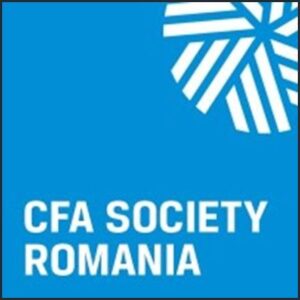 The leu has been on a downward trend against the euro for the past two weeks.
The leu has been on a downward trend against the euro for the past two weeks. 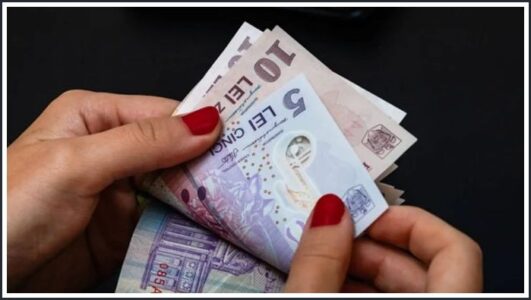 Adrian Codirlașu, vice president of the CFA, believes that the pressure is coming from foreign companies repatriating their profits.
Adrian Codirlașu, vice president of the CFA, believes that the pressure is coming from foreign companies repatriating their profits.
At the same time, ING Bank realizes that the chances of the euro crossing the 5 lei are still slim until the fall.
The CFA Society Romania is one of the main local professional organizations that brings together investment professionals from banking, asset management, insurance, private equity, pension funds and other various fields of the investment industry.
Founded in 2000 as a professional, non-governmental organization, CFA Society Romania is one of the investment companies that are part of the CFA Institute.
The euro/leu exchange rate moves within a narrow and safe range of 4.960 – 4.973.
Excess liquidity in the system remains near record levels, and the leu is likely to continue.
We are talking about the official rate set by the BNR.
However, according to ING Bank’s monthly report, the interbank rate has remained stable recently between 4.9715 and 4.9860 lei for one euro. 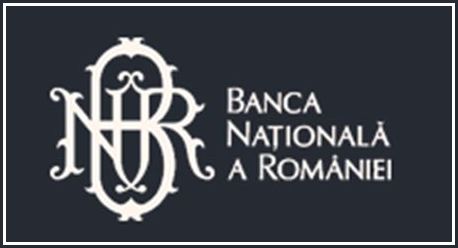 Adrian Codirlaşu, vice president of the CFA, said some pressure is being felt on the euro as profits are repatriated.
Adrian Codirlaşu, vice president of the CFA, said some pressure is being felt on the euro as profits are repatriated.
“After our currency market closed, the exchange rate went to 4.98. After the market closed, the euro-leu rate rose and was brought back to the range of 4.97 lei in the morning. Foreign companies in Romania, including taxes received by the Ministry of Finance, prove this: they made big profits last year and even this year they are big. In this context, the pressure on euro demand is also due to the need to repatriate profits or part of them,” Codirlașu said.
However, ING Bank’s July 10 2024 report shows that “a deviation from current levels remains unlikely in the near term.
Inflation has recently outperformed market expectations, but some of the gains will be lost in July due to higher fuel taxes and gas transportation costs.
Non-food inflation and services inflation remain the main headline concerns for the NBR, and it is unlikely that in the short term, exchange rate depreciation will be taken into account,” the Dutch bank’s analysis said. 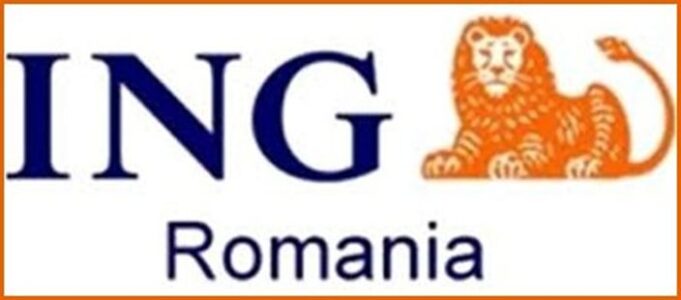 Also, strong growth in retail sales, double-digit wage growth, continued fiscal slippage and a likely increase in the tax burden next year continue to pose upside risks to inflation, maintaining the need for exchange rate stability in the future.
Also, strong growth in retail sales, double-digit wage growth, continued fiscal slippage and a likely increase in the tax burden next year continue to pose upside risks to inflation, maintaining the need for exchange rate stability in the future.
‘In conclusion, we still expect the NBR to maintain its tight control over the currency for the foreseeable future.
The chances of exceeding the level of 5.00 lei for one euro in the autumn are still weak in our view,” ING Bank representatives concluded.
Forecasts from most of the banks’ chief economists and financial analysts say that exchange rate stability is likely to remain at the core of the NBR’s decision-making process, and that by 2024 we will have a stable euro exchange rate around 4.98 in the second and third quarters and one end per quarter.
year-end with a euro-leu exchange rate of 5.05.
Geopolitical developments
Romania, Bulgaria and Greece recently signed the agreement to establish the military corridor.
What does this mean?
Romania, Bulgaria and Greece signed an agreement Thursday for the creation of a corridor allowing rapid cross-border movement of troops and weapons on NATO’s eastern flank, the Romanian Defense Ministry announced.
According to the quoted source, “this initiative represents significant progress in strengthening NATO’s defense and deterrence capabilities in the region.”
What the three countries’ project on the military corridor entails The project aims to optimize transport corridors to meet the needs of military mobility, creating supply routes (road and rail) between participating states, reducing peacetime bureaucracy and maximizing efficiency in emergency and crisis situations, taking into account NATO and nation-state initiatives.
The agreement also comes in the context of Russia’s invasion of Ukraine, which is urgently preparing a system to quickly send reinforcements in case of a possible escalation of the conflict.
The letter of intent signed by Greece, Bulgaria and Romania is closely aligned with NATO’s priorities of ensuring collective defense, improving rapid response capabilities and increasing interoperability among member states, thus contributing to a fair sharing of responsibilities among allies. 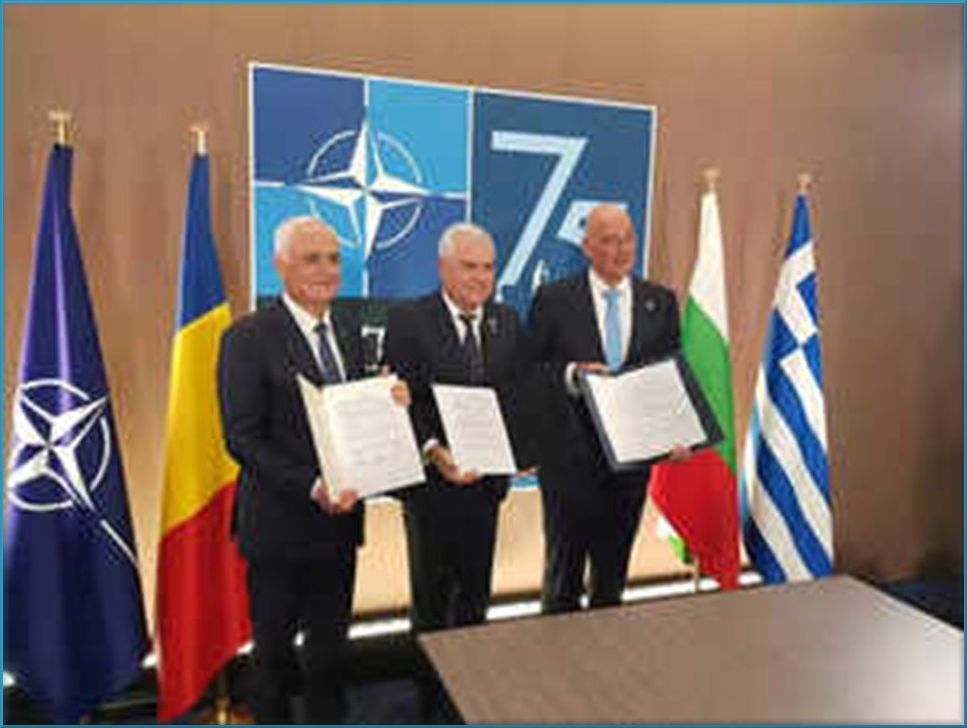 “Close cooperation with Bulgaria and Greece will allow us to respond more effectively to current and future security challenges. We will continue discussions and we will remain open to other similar initiatives, which will lead to the consolidation of Romania’s role within the North Atlantic Alliance,” the Romanian defense minister stressed, according to a defense ministry press release, quoted by Agerpres.
“Close cooperation with Bulgaria and Greece will allow us to respond more effectively to current and future security challenges. We will continue discussions and we will remain open to other similar initiatives, which will lead to the consolidation of Romania’s role within the North Atlantic Alliance,” the Romanian defense minister stressed, according to a defense ministry press release, quoted by Agerpres.
The project will benefit from existing initiatives at the European Union level aimed at a coordinated approach between NATO and the EU in the field of military mobility.
Implementation of the project at the national level will require joint efforts between different institutions, involving the entire government spectrum.
In the context of the 2023 NATO Vilnius Summit, agreement was reached on the need to strengthen the Alliance’s deterrence and defense posture by adopting new defense plans and accelerating military adaptation.
This alignment includes the ability to supplement troops and equipment and ensure logistical support by facilitating the cross-border transit of forces and capabilities even in peacetime, MApN explained.
Romania and Bulgaria are already part of a joint effort with Turkey to remove mines from the Black Sea.
Montreux Convention and Bosphorus
The Turks fear that this military Benelux in the Balkans, which is on NATO’s working table, is designed to bypass the Bosphorus and Dardanelles Straits.
At the same time, the final declaration of the Alliance Summit in Washington last week states, among other things, that security and freedom of movement in the Black Sea will be guaranteed through the Montreux Convention.
Turkey periodically declares that it strictly respects the Montreux Convention, 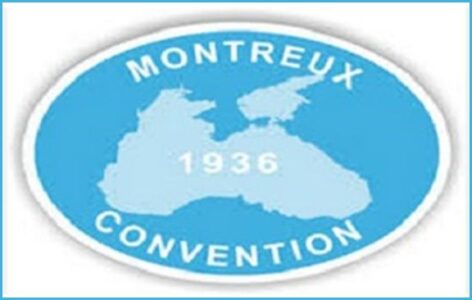 signed in 1936, and that, based on Article 19, when Russia invaded Ukraine, it closed the Strait area to the passage of warships of the countries participating in the conflict areas and non-Baltic states in order to “prevent further escalation of tensions in the Black Sea basin.”
signed in 1936, and that, based on Article 19, when Russia invaded Ukraine, it closed the Strait area to the passage of warships of the countries participating in the conflict areas and non-Baltic states in order to “prevent further escalation of tensions in the Black Sea basin.”
While it is true that Turkey prevents the passage of Russian warships through the Bosphorus and Dardanelles, it also does not allow NATO countries to provide assistance to Ukraine at sea.
That is why the Alliance wants to develop the land route: as far as Alexandroupoli, a port on the Aegean Sea, equipment and weapons from the Alliance can be brought in by sea, and from there they should be able to be loaded onto trucks and train platforms
to the hotspots where they are needed.
The ability to move troops quickly to NATO’s eastern flank through streamlined procedures is a priority for the Alliance.
Turkey, which has tried to be a peace-maker in the Black Sea and plays all sides, has been a vulnerable part over the past 15 years 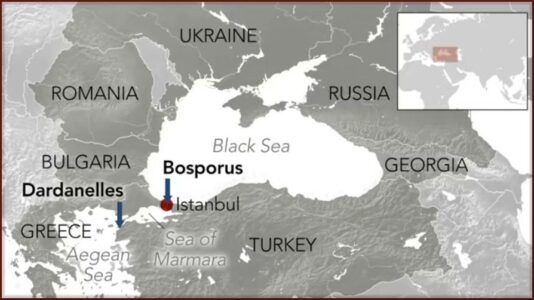 of the Alliance, which NATO wants to use intelligently. On the other hand, in Bulgaria there is a power pole that supports Russia on the face of it, while in Romania the power leaders, though officially and traditionally on the side of the West…. For now, however, these routes that would go by land from Thessaloniki and Alexandroupoli through Varna to Constanta could work if the war were to spread, in support of Ukraine, but also as a safety net in support of the states in this area. It is not yet known who will pay for the new infrastructure to be developed and, more importantly, how quickly it can be put on track. Granted, there is a lot of improvisation going on every day in the Balkans, but perhaps NATO will take the project into its own hands and together with the EU find money for a new rail line, which will be built quickly and will start from Romania. , where near Constanta will be Europe’s largest allied base, all the way to Greece, in Alexandroupoli, where one of the continent’s largest military ports is being built.
of the Alliance, which NATO wants to use intelligently. On the other hand, in Bulgaria there is a power pole that supports Russia on the face of it, while in Romania the power leaders, though officially and traditionally on the side of the West…. For now, however, these routes that would go by land from Thessaloniki and Alexandroupoli through Varna to Constanta could work if the war were to spread, in support of Ukraine, but also as a safety net in support of the states in this area. It is not yet known who will pay for the new infrastructure to be developed and, more importantly, how quickly it can be put on track. Granted, there is a lot of improvisation going on every day in the Balkans, but perhaps NATO will take the project into its own hands and together with the EU find money for a new rail line, which will be built quickly and will start from Romania. , where near Constanta will be Europe’s largest allied base, all the way to Greece, in Alexandroupoli, where one of the continent’s largest military ports is being built.
Post Craiova

Europe at last
At last, despite stiff and persistent opposition from countries like Austria and – unfortunately – the Netherlands, Romania has joined the Schengen area as far as air and sea travel is concerned.
This means that travelers are allowed to proceed without passport control at airports.
In my weekly commute between the Netherlands and Romania, this saves over half an hour in time.
Especially when returning to Schiphol Airport, where the digital passport control devices are very often turned off for unknown reasons, a real improvement.
By the way: Could it be that the military police regularly turn off these devices on purpose?
I myself would not like to be replaced by a machine that does my work more efficiently than I do myself and also does not ask unnecessary questions, but this aside.
Time savings aside, the symbolism of joining Schengen is perhaps far more important.
Travelers to and from Romania are now not hindered in any way; you need a boarding pass: that’s it!
It almost feels like Romania is now truly being embraced by the European community.
One step at a time.
Hopefully, Romania’s entry into the European monetary union, which would replace the Romanian Lei with the Euro, will be the next big step.
In my belief and experience – from the context of someone who first visited Romania in 1994 – an incredible amount has changed and improved in the last 3 decades.
I also hear this back from many visiting relations who come here a few times a year.
They see the improvements as it were in a kind of timelapse of 2 or 3 times a year, making changes much more visible.
Actually at all levels.  For example, many cities are in the process of adding a layer of insulation to the many ugly apartment buildings, making them look much more modern.
For example, many cities are in the process of adding a layer of insulation to the many ugly apartment buildings, making them look much more modern.
The national and provincial road network, thanks in part to European funds, is being rapidly modernized.
As are a host of regional airports with international destinations.
Much more importantly, young generations of Romanians are in many ways hardly different from their peers in other European countries in terms of mentality and attitudes.
Perhaps the crux of my argument is that Romania is rapidly catching up to the pace of development.
The perceived cultural differences between Eastern and Western Europe are rapidly shrinking.
We are seeing barriers disappear, distances decrease and international connections improve.
Romanian President Klaus Johannis even made a bid for the presidency of NATO.
He didn’t stand a chance against Rutte, but in doing so he showed his commitment and ambition to be part of a united Europe.
Only the awareness of this is still lacking among many Dutch people; we see this time and again when NetRom guests visit Romania for the first time and are surprised by what they find here.
Besides all the developments in recent years, and now the accession to the Schengen area, I secretly hope that this blog also makes a small contribution to the perception of its readers.
The Habsburg Empire strikes again.
How Orban plans to become the new emperor of Europe
Viktor Orban wants to revive the Habsburg empire, but this time with Hungary at the helm.
Patriots for Europe(PFE): most EP members belong to right-wing extremists in France Orban, the role model in the eyes of the far right in Europe Some patriots admire Putin, others 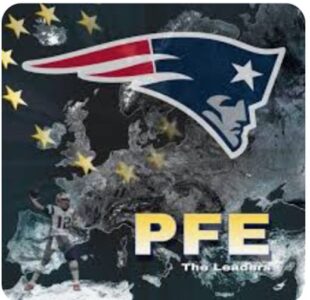 worship him outright Patriots for Europe could become a major political force in the EU.
worship him outright Patriots for Europe could become a major political force in the EU.
Viktor Orban has reunited Europe’s oldest gang.
The new far-right group Patriots for Europe is a Habsburg coalition that gives the Hungarian leader the European platform he craves, Politico writes .
Its most ardent fans call this group, which broke up long ago, “kuk” – ” kaiserlich und königlich ” (imperial and royal).
But to everyone else, it is known as the Habsburg Empire.
Of all the recent news regarding Orbán’s machinations, the most egregious, when it comes to the Hungarian leader’s relationship with power, was the June 30 announcement from Vienna, when he announced that he was forming the group Patriots for Europe.
PfE) – a far-right political group in the European Parliament.
Alongside other right-wing populist leaders in Austria and the Czech Republic, a triumphant Orban announced the formation of his new club, which encompasses the core areas of the former Habsburg Empire – Austria, Bohemia and Hungary, leaving no doubt who is in charge.
“We are creating a political formation that, in my opinion, will take off like a rocket and very quickly become the largest group on the European right,” Orbán said.
“The sky is the limit.”
The group’s name is a classic case of anti-sense, meaning it has the opposite meaning of what it seems to mean – like when you call a giant “little one.
While the term “patriots” can mean many things, “for Europe” cannot be something that describes these “patriots.
Founders of the group Patriots for Europe: Andrej Babis, former prime minister of the Czech Republic, Herbert Kickl, leader of the Freedom Party of Austria, and Hungarian Prime Minister Viktor Orban.
Patriots for Europe: most EP members belong to right-wing extremists in France Shortly after Orbán’s announcement, Le Pens National Assembly joined the Patriots, as did Italy’s Lega party, joining a list of major far-right parties from Spain to the Netherlands. 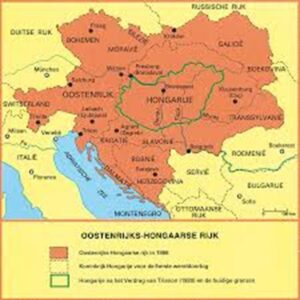 Although the French will have the Patriots’ largest delegation, Orban and his Habsburg allies may end up dominating the group if they also manage to attract the populist parties of Slovenia and Slovakia, as they are likely to do.
Although the French will have the Patriots’ largest delegation, Orban and his Habsburg allies may end up dominating the group if they also manage to attract the populist parties of Slovenia and Slovakia, as they are likely to do.
Given that the kind of nationalism the patriots espoused led to the destruction of the Habsburg Empire in 1918, their growing alliance seems surprising.
Until recently, the only commonality among the politicians now part of the Patriot group was a lack of mutual trust.
The Freedom Party of Austria, for example, has for decades been demanding compensation from the Czechs for Austrians who lost their homes and were expelled from the former Czechoslovakia after World War II.
At the same time, one of the few things Czechs, Slovaks, Hungarians and Slovenes agreed on was how full of themselves Austrians are.
And so how did they all arrive at the same time?
The short answer: Orban.
Le Pen’s party, the National Assembly (RN), has the most MEPs of any party that has joined Patriots for Europe so far.
Orban, the role model in the eyes of the far right in Europe Although many members of the new club still view each other with suspicion, populists in central Europe know a winning formula when it presents itself.
Whatever one says about Hungary’s wily leader and his conciliatory diplomacy over the past week, which has taken him from Kiev to Moscow and Beijing , it cannot be said that Orbán does not have grand ambitions.
In right-wing political circles throughout the region, Orban is seen as a role model.
After hearing of Orbán’s visit to Moscow, Slovak populist Prime Minister Robert Fico, who recently survived an assassination attempt, was full of appreciation for the Hungarian leader and even admitted that he would have enjoyed participating in his counterpart’s “peace mission” as well.
in the neighboring country.
“I would like to congratulate the Hungarian prime minister and express my admiration for his decision to visit Kiev and Moscow without hesitation,” said Fico, whose Smer party is in talks to join the Patriots.
“If my health allowed it, I would have gladly participated.”
The friendship between Orban and Fico may seem a bit surprising, given the complicated history of relations between the countries they lead and Hungary’s 800-year rule over the Slovak nation, which ended in 1918.
Moreover, the two come from opposite ends of the political spectrum: Orban, once a dissident who opposed Soviet control, comes from the political right, while Fico is a former communist who became a social democrat after the fall of the Berlin Wall.
Vladimir Putin speaks with Viktor Orbán before a joint press conference Some patriots admire Putin, others worship him outright In addition to their frustration with the leadership in Brussels, patriots also have a much more amicable view of Russian President Vladimir Putin and his war in Ukraine.
With the exception of Austria, the far-right parties that have so far joined the Patriots are from NATO member states. 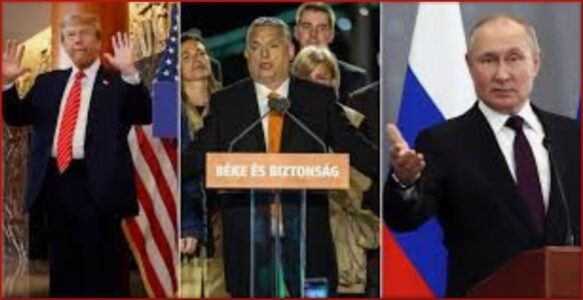 Yet many of them do not hide their respect for the Russian leader – while some reluctantly express their admiration for Putin, others simply adore him.
Yet many of them do not hide their respect for the Russian leader – while some reluctantly express their admiration for Putin, others simply adore him.
“Putin cannot lose,” Orban said in an interview last week.
“The idea that Russia can be defeated is very hard to imagine.”
In addition to their distrust of the EU and enthusiasm for Russia, Orban’s Habsburg coalition is also united by their common opposition to immigrants from the Muslim world, which the patriots see as a phenomenon of the clash of civilizations.
“We believe in a Europe determined to protect its borders, stop illegal immigration and defend its cultural identity, following the will of the vast majority of European citizens,” the group wrote in its founding manifesto.
Patriots for Europe could become a major political force in the EU With members of the Patriots already in power in Hungary and leading in opinion polls in the Czech Republic and Austria ahead of elections in both countries in September, Orbán’s alliance could soon become a major political force both in the region and throughout the European Union.
After sitting in Austria’s shadow for nearly all six centuries of the Habsburg Empire’s existence, Hungary could now become the centerpiece.
If needed, Orban has a true Habsburg at his disposal: Edward Habsburg-Lothringen, the great-grandson of 19th-century Emperor Franz Joseph I, is Budapest’s envoy to the Holy See.
“If we are ever needed, we are there,” he said recently in an interview.
It was a joke, but also with a kernel of truth.
Perhaps the link between Putin and Orban is historically explicable because Hungarians (also: Magyars) made their entry into Europe at the end of the ninth century, when they migrated from the southern Russian steppe across the Carpathians as a nomadic people.
By the way, the Hungarian language has a history of thousands of years dating back to Asia.
The most widespread opinion is, that it belongs to the Finno-Ugric languages.
It separated from most of the other Finno-Ugric languages near the Ural Mountains about 3,000 years ago.
European Union could boycott business summit organized by Viktor Orbán
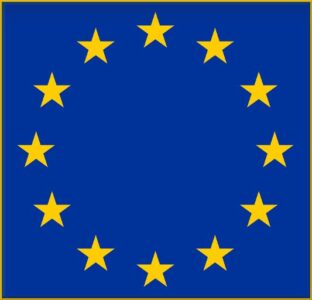 The European Union could boycott Viktor Orbán’s business summit and hold its own foreign affairs summit in August.
The European Union could boycott Viktor Orbán’s business summit and hold its own foreign affairs summit in August.
On Aug. 28 and 29, Hungary, which holds the rotating presidency of the EU Council, plans to hold a foreign affairs summit in Budapest.
However, because of his pro-Russian policies and the Hungarian prime minister’s peace visits to Russia and China, which were not coordinated with the EU’s other 26 national leaders, many foreign ministers have been looking for a way to avoid attending a peace visit, which is an event that could become another Orbán propaganda show.
That is why Josep Borrell, head of EU foreign policy, will convene ministers for a “formal” foreign affairs council at the same time as Orbán’s summit.
With this action, the goal is to limit Viktor Orban’s prominence and influence at the European level.
Viktor Orbán again challenges EU and appoints current commissioner to new term even though he is not approved by Ursula von der Leyen
Victor Orbán.
Viktor Orban announced Monday that he supports the current European commissioner from Hungary, Oliver Varhelyi, for a new mandate, despite the fact that Ursula von der Leyen and the political establishment in Brussels do not like his performance and criticize him.
Many times for his handling of the rule of law problems of some candidate countries, reports Politico .
“Over the past five years, Commissioner Varhelyi has proven that the EU as a positive force can make a difference in our neighboring countries and beyond. He will do an excellent job in the next commission,” Orbán wrote on social media Monday.
Orbán’s decision will once again cause irritation in Brussels – Varhelyi has led the European Neighborhood and Enlargement Commission since 2019 and has been heavily criticized several times for the way he handled his mandate. 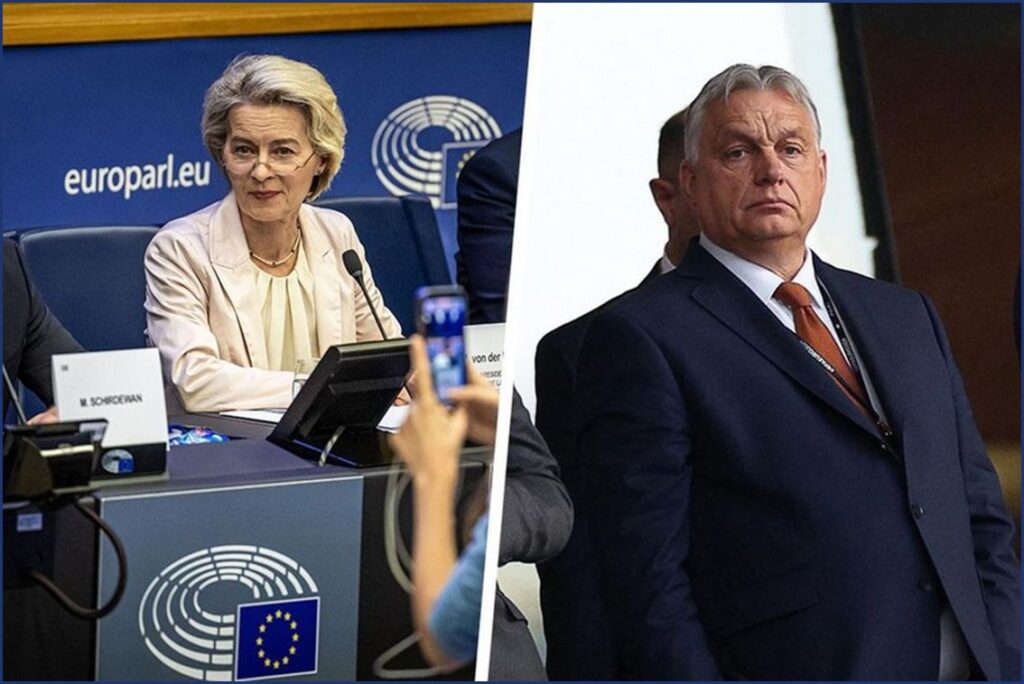 In addition, President Ursula von der Leyen has asked national governments across the bloc to come up with two candidates for commissioner positions – one male and one female – unless she re-nominates the incumbent commissioner.
In addition, President Ursula von der Leyen has asked national governments across the bloc to come up with two candidates for commissioner positions – one male and one female – unless she re-nominates the incumbent commissioner.
However, it remains unlikely that Varhelyi will retain his post on the future commission as well, as it is a crucial post for the next five years, given the preparation for Ukraine and the Republic of Moldova to join the European bloc.
In this context, the EU states are not at all open to the idea of Varhelyi retaining his place in the Commission, especially given the fact that the Orbán government is drifting further and further away from European values and is becoming increasingly belligerent toward European values.
European partners, all to satisfy the dictators’ allies, especially Vladimir Putin.
Ahead of the start of the presidency, fears and unease were already growing in Brussels about Hungary’s upcoming role.
In recent years, both Brussels and other EU countries have constantly been at odds with Orbán, including over the rule of law, but also over Hungarian blocking sanctions on Russia and support for Ukraine.
Last year, a majority of the European Parliament already called for the Hungarian presidency to be suspended.
That option is now being openly discussed again in Brussels, but the chances of it actually happening remain slim, as those involved say it would mean too great an escalation in relations
Transit of Russian oil to Hungary blocked
Ukraine has for some time been blocking some of the oil exported by Russian company Lukoil to Hungary and Slovakia via the Drujba pipeline that runs through its territory.
In August, Kiev could suspend oil transit to Hungary because of power cuts caused by Russian attacks, Daily News Hungary writes.
Russian company Lukoil sent another 0.34 million tons of crude oil to the ports, an amount equivalent to one month’s imports from Hungary and Slovakia.
This means that the Russians plan to transport the quantity by sea.
Moreover, Russian companies Rosneft and Tatneft have also decided to direct 300,000 tons of crude oil to Russian ports, which means they fear Ukraine could ban the transport of Russian crude oil on its territory from August. 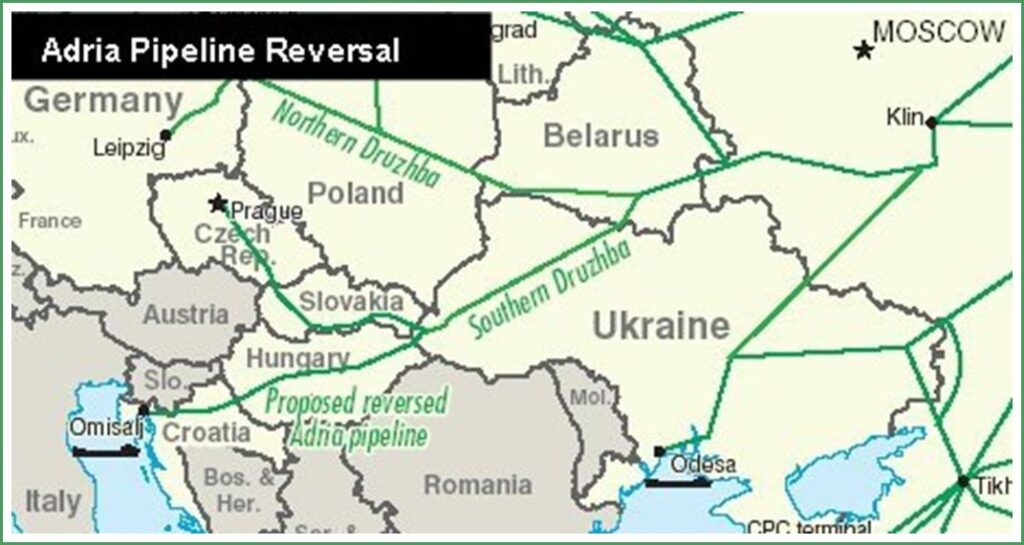 The Ukrainians would extend the transport ban to other Russian companies as they want to route electricity to the population instead of using compressors along the pipeline. The former CEO of the Ukrainian pipeline operator urged Ukraine to stop transporting Russian oil. Kiev gets only $250 million for transit, while Russia earns $6 billion. Gergely Gulyas, head of the prime minister’s office, said Hungary is prepared for all scenarios. Budapest is looking for solutions, he told Reuters. ‘One is for the Ukrainians to admit that they cannot do this to two EU member states. Another is for the European Commission to help us, and the third is to find a legal loophole that allows the oil to be transferred by someone who is not under sanctions.” Gulyas and Hungary’s energy minister talked about a possible import of Russian crude oil through the Adriatic port of Omisalj and the Adriatic pipeline, Daily News Hungary notes. However, this is not a long-term solution because pipeline capacity is much lower than demand. Through this port, Russian oil could arrive in Hungary via Croatia. However, that amount will not be enough for two refineries. The Hungarian government speaks of blackmail from Ukraine in this war, but the European Commission does not seem to agree. Brussels has announced that it needs more time to gather evidence and analyze the situation. Attila Holoda, a Hungarian energy expert, says Hungary will not run out of fuel even if the Ukrainians close the pipeline. And that’s because MOL can also process other types of oil. However, the price is not the same. Oil bought from other sources could lead to fuel prices. During this war, Bulgaria extended a helping hand to Hungary. Bulgaria offered to help Hungary overcome the challenges posed by Ukraine’s actions, Hungarian Foreign and Trade Minister Peter Szijjarto announced. He noted that although Bulgaria has no direct connections with Hungary, the country is willing to supply additional oil products through alternative routes. “This offer of help from Bulgaria represents a new gesture of beautiful and true friendship.” As for Slovakia, which was also involved in the war, Prime Minister Robert Fico offered a technical solution to the situation but gave no details about it.
The Ukrainians would extend the transport ban to other Russian companies as they want to route electricity to the population instead of using compressors along the pipeline. The former CEO of the Ukrainian pipeline operator urged Ukraine to stop transporting Russian oil. Kiev gets only $250 million for transit, while Russia earns $6 billion. Gergely Gulyas, head of the prime minister’s office, said Hungary is prepared for all scenarios. Budapest is looking for solutions, he told Reuters. ‘One is for the Ukrainians to admit that they cannot do this to two EU member states. Another is for the European Commission to help us, and the third is to find a legal loophole that allows the oil to be transferred by someone who is not under sanctions.” Gulyas and Hungary’s energy minister talked about a possible import of Russian crude oil through the Adriatic port of Omisalj and the Adriatic pipeline, Daily News Hungary notes. However, this is not a long-term solution because pipeline capacity is much lower than demand. Through this port, Russian oil could arrive in Hungary via Croatia. However, that amount will not be enough for two refineries. The Hungarian government speaks of blackmail from Ukraine in this war, but the European Commission does not seem to agree. Brussels has announced that it needs more time to gather evidence and analyze the situation. Attila Holoda, a Hungarian energy expert, says Hungary will not run out of fuel even if the Ukrainians close the pipeline. And that’s because MOL can also process other types of oil. However, the price is not the same. Oil bought from other sources could lead to fuel prices. During this war, Bulgaria extended a helping hand to Hungary. Bulgaria offered to help Hungary overcome the challenges posed by Ukraine’s actions, Hungarian Foreign and Trade Minister Peter Szijjarto announced. He noted that although Bulgaria has no direct connections with Hungary, the country is willing to supply additional oil products through alternative routes. “This offer of help from Bulgaria represents a new gesture of beautiful and true friendship.” As for Slovakia, which was also involved in the war, Prime Minister Robert Fico offered a technical solution to the situation but gave no details about it.
Romanian coalition of PSD and PNL announces Presidential and Parliamentary elections
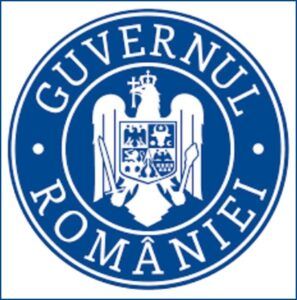 The ruling coalition has completed discussions on the election calendar for the presidential and legislative elections, according to a joint press release from the PSD-PNL.
The ruling coalition has completed discussions on the election calendar for the presidential and legislative elections, according to a joint press release from the PSD-PNL.
“Taking into account the opinions of other political groups, the coalition representatives reached a consensus on the presidential election schedule as follows: – First round on Nov. 24 – Second round on Dec. 8.
In addition, an agreement was reached to hold parliamentary elections on Dec. 1, the press release said.
Cultural sector
Traditions Of Saint Elijah In Romania
Saint Elijah, known as “Sfântul Ilie” in Romania, is a revered figure in Romanian culture, celebrated every year on July 20.
This day is marked by various traditions and customs that reflect the rich tapestry of Romanian folklore and religious practice.
Saint Elijah is revered as the patron saint of weather, especially thunderstorms, and his feast day is associated with numerous rituals aimed at invoking his protection and blessing.
Historical and religious significance
Saint Elijah, or Elijah the Prophet, is a prominent figure in both the Old Testament and New Testament, known for his zealous struggle against idolatry and his dramatic ascension in a chariot of fire.
In Romanian tradition, he is believed to control rain, thunder and lightning.
This belief has led to many customs designed to appease him and secure his favor, especially for good weather and bountiful harvests. 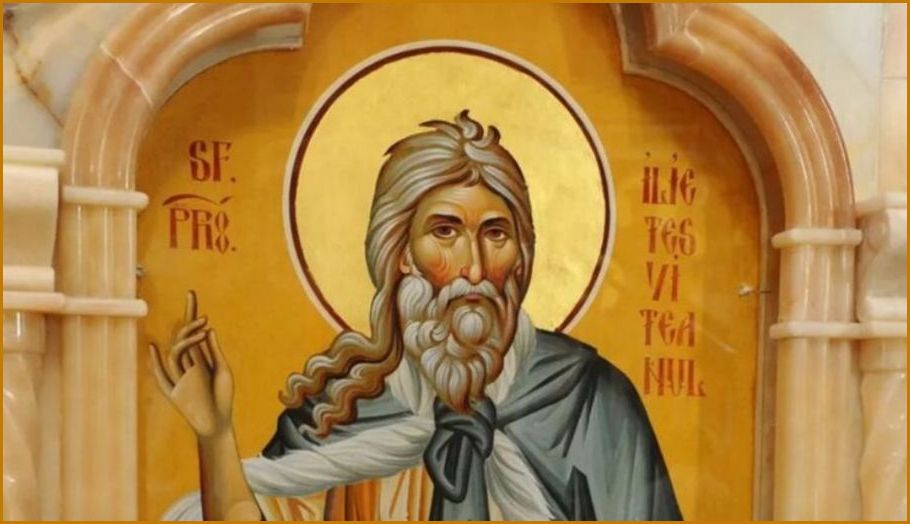
Traditions and customs
- Church services and blessings:On Saint Elias Day, Romanians attend church services where priests perform special prayers and blessings.
Many believers bring honey to church to be blessed, as honey is considered sacred and a symbol of the sweetness and abundance that Saint Elias can bestow. - Weather rituals:Given Saint Elijah’s association with the weather, various rituals are performed to protect against storms and ensure good weather.
In some rural areas, people put basil under their pillows the night before his feast day, believing that Saint Elijah will appear in their dreams and offer protection.
- Beekeeper festivals:Saint Elijah is also considered the patron saint of beekeepers.
On this day, beekeepers celebrate by offering the first honey of the season to their neighbors and friends.
This act of sharing symbolizes gratitude and the hope of continued blessings for their hives.
In the villages of Moldova, cucumbers are eaten with bee honey on St. Elias Day to be healthy all year round.
On this day, households also eat freshly cooked wheat, sweetened with honey, to multiply their work.
- Communal celebrations:In many Romanian villages, St. Elias Day is an occasion for communal gatherings and celebrations.
People prepare traditional dishes, often including honey cakes, and share meals with their families and neighbors.
These feasts are not only a celebration of the saint, but also a way to strengthen ties within the community. - Protective customs:To protect themselves from the storms that Saint Elijah is believed to be driving, some Romanians avoid certain activities on his feast day.
For example, it is customary not to work in the fields or perform heavy tasks because it is believed that St. Elijah’s chariot may strike those who are disobedient or disrespectful on this holy day with lightning. - Folk beliefs:In addition to religious customs, several folk beliefs are associated with Saint Elijah.
It is said that if it rains on his feast day, the next harvest will be plentiful.
Conversely, a dry day may foretell a poor harvest.
These beliefs emphasize the saint’s perceived influence on agriculture and the natural world.
Conclusion
St. Elias Day in Romania is a vibrant mix of religious devotion, cultural practices and community spirit.
The traditions associated with this day reflect the deep bond between the Romanian people and their natural environment, as well as their dependence on the divine for protection and prosperity.
Whether through church services, communal feasts or protective rituals, the celebration of St. Elia remains an important and cherished part of Romania’s heritage.
Porgy and Bess in concert
Harry Potter, The Starwars Suite in Concertgebouw Amsterdam, Haarlem, Eindhoven and Arnhem, among others
From Oct. 19-27, 2024

Conductor Raymond Janssen
His mission? Bringing Eastern Europe and Western Europe closer together. The rich tradition from Eastern European countries especially Ukraine and Romania can be heard and felt, and everyone should know that!
Partly due to the former political isolation of these countries, this cultural heritage has been able to survive in its originality.
Cadenza wants to present this handed-down tradition to Western European countries.
CADENZA European Art Productions has acquired a unique position within the classical music world since its inception in 2006.
By operating outside the mainstream, and by transparently establishing international musical connections, Cadenza has broken new ground and given new impetus to the contemporary experience of classical music.
As a result, it has now also gained a prominent place on Dutch concert agendas.
To date, we have operated without subsidies, which may be called exceptional in the cultural world. 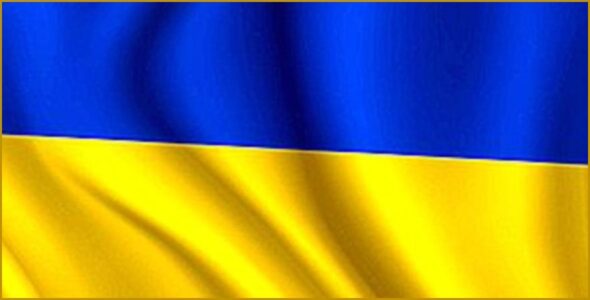 The current situation in Ukraine rocks the world.
The current situation in Ukraine rocks the world.
An attack by Russia on Ukraine is a direct attack and violation of fundamental and universal values, freedom, human rights and democracy, as well as an attack on Ukraine’s own rich culture.
Including a music culture with gifted, passionate and sensitive musicians.
These very talented musicians have brought wonderful music to the Netherlands and are now facing an unprecedented dissonance.
The current situation is terrible and a nightmare for all Ukrainians.
Doch right now our thoughts are especially with our friends from INSO Lviv and DUMKA National Choir from Ukraine in Kiev.
We wish them all all the strength they need to get through these dark and terrible times. 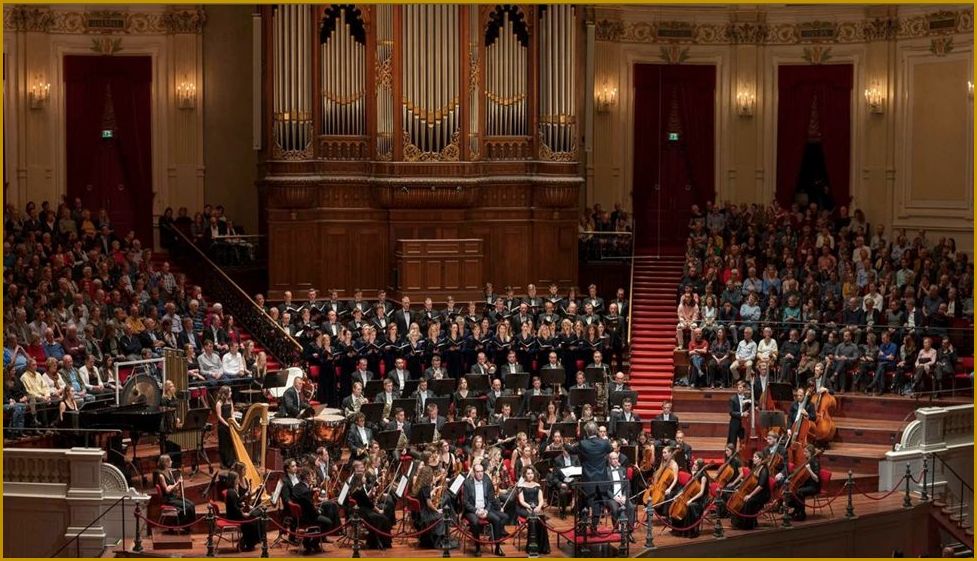

Don’t miss it!
Led by conductor Raymond Janssen, the International Symphony Orchestra from Lviv and the National Choir of Ukraine ‘Dumka’ bring the best moments from George Gershwin’s masterpiece Porgy and Bess to the Netherlands.
Five exclusive concerts will take place in Haarlem, Amsterdam, Eindhoven and Arnhem this fall.
Why you don’t want to miss this:
Unique combination: Jazz, blues and classical music merge in a timeless American opera.
Top performers:
More than 140 musicians of international class bring this opera to life.
– Legendary story:
Love, loss and struggle in an African-American community in the 1920s.
Additional Gershwin classics:
Also enjoy such works as An American in Paris and I Got Rhythm.
Concert dates:
– Haarlem | Philharmonie Haarlem: October 19, 2024, 20:00
– Amsterdam | Het Koninklijk Concertgebouw: October 20, 2024, 20:15
– Eindhoven | Muziekgebouw Eindhoven: October 25, 2024, 20:00
– Arnhem | Musis: October 27, 2024, 19:30
Tickets are limited.
Book now and experience an evening of musical highlights!
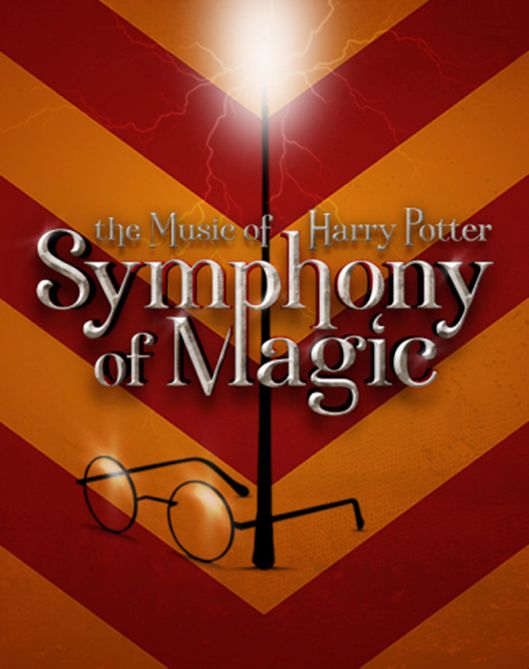
The Music of Harry Potter
Experience the musical story of Harry Potter!
Award-winning composers such as John Williams, Patrick Doyle, Nicholas Hooper and Alexandre Desplat bring the magic to life.
In October, the enchanting music from all the Harry Potter films comes to Amsterdam, Arnhem and The Hague!
With conductor Raymond Janssen, The International Symphony Orchestra from Lviv, and the National Choir of Ukraine “Dumka,” this concert will be a magical experience.
From Hedwig’s Theme to the epic sounds that take you to Hogwarts – you don’t want to miss this! John Williams composed the unforgettable music for the first three films, including such classics as Harry Potter and the Philosopher’s Stone and Harry Potter and the Prisoner of Azkaban.
Patrick Doyle, Nicholas Hooper and Alexandre Desplat completed the magic with their masterpieces.
Don’t miss this unique opportunity!Book your tickets now and be swept away by the music of Harry Potter. Monday 21-10-24 Musis&Stadtheater Arnhem Harry Potter Saturday 26-10-2024 Concertgebouw Amsterdam Harry Potter Sunday 27-102024 Musis&Stadtheater Arnhem 
Unique Star Wars Concert Series Returns to the Netherlands
After the mega success in 2018, 2019 and 2022, the unique concert series of The Star Wars Suite returns to Amsterdam and Eindhoven.
The Imperial March, Princess Leia’s Theme and The Asteroid Field will once again be heard, performed by The International Symphony Orchestra from Lviv and the National Choir of Ukraine ‘Dumka’, from Kyiv, conducted by conductor Raymond Janssen. Musical Background John Williams composed the iconic film score for Star Wars, considered the best film music of all time.
His classical style, inspired by composers such as Gustav Holst and Richard Strauss, set a new standard for film soundtracks.
In addition to Star Wars, Williams also composed for such films as Jurassic Park, Harry Potter and Schindler’s List, and has 51 Academy Award nominations.
Raymond Janssen, initiator of The Star Wars Suite, is known for his original and high quality concerts.
In addition to film music, he has many successes to his name with concerts of The Lord of the Rings, The Symphony of Magic, Opera Galas, the Verdi and Mozart requiem and Carmina Burana, among others. Concert Information
- Composer: John Williams
- Choir: The National Choir of Ukraine ‘Dumka’
- Orchestra: The International Symphony Orchestra from Lviv
- Conductor: Raymond Janssen
- Soloist: Eugen Kruk – Violin
Wednesday 23-10-2024 – Concertgebouw Amsterdan – Starwars Suite Wednesday 24-10-2024 – Muziekgebouw Eindhoven – Starwars Suite
For reservations: www.cadenza-productions.nl
Disclaimer

The newsletter of the Dutch Romanian Network is compiled with great care. The Dutch Romanian Network cannot accept any liability for a possible inaccuracy and/or incompleteness of the information provided herein, nor can any rights be derived from the content of the newsletter. The articles do not necessarily reflect the opinion of the board.
